Jul 2014
Jul 2014 sadmin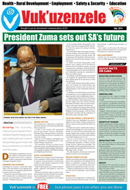
President Zuma sets out SA’s future
President Zuma sets out SA’s future sadminGrowing the economy, improving local government, transforming the energy sector and creating jobs are some of the priorities government will focus its attention on over the next five years.
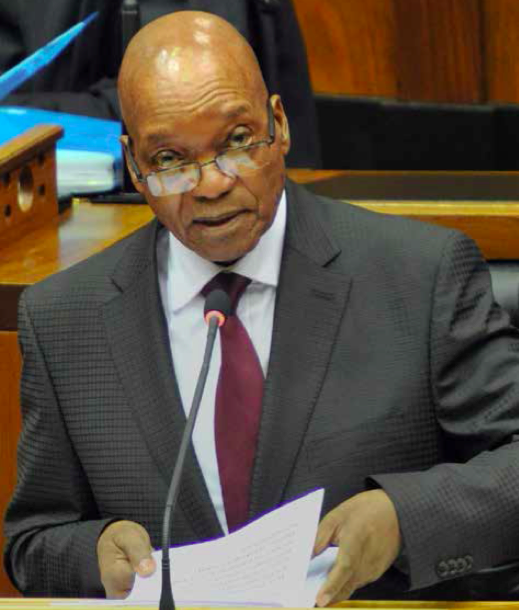 Delivering his seventh State of the Nation Address in Parliament recently, President Jacob Zuma outlined a number of measures to deal with the challenges facing the country.
Delivering his seventh State of the Nation Address in Parliament recently, President Jacob Zuma outlined a number of measures to deal with the challenges facing the country.
Growing the economy
Expanding the economy would take centre stage, as the most effective way to fight poverty was to create jobs. Creating jobs required faster economic growth, he noted.
“We have set a growth target of 5 per cent by 2019. To achieve this, we will embark on various measures and interventions to jump-start the economy,” President Zuma said.
Mining sector
The mining sector, which plays a significant role in the economy, will receive closer attention from government.
As part of the October 2012 agreement between government, business and labour, President Zuma said government would fast- track the building of houses in mining towns across the country.
Minister in the Presidency Jeff Radebe will lead a committee on the Revitalisation of Distressed Mining Communities.
The committee will focus on various towns across the country, including Matlosana (North West), Emalahleni (Mpumalanga), Sekhukhune and Lephalale (Limpopo), West Rand (Gauteng) and Matjhabeng (Free State).
Local government
President Zuma said government had listened to the complaints of South Africans and a plan to improve local government would be put in place to make people’s experience of local government more pleasant.
Help would be given to a number of municipalities, especially with regards to water and sanitation.
Sharing government’s plan of action to revitalise local government, President Zuma noted that all municipalities had been evaluated.
He detailed the municiplaities where support would be proivded.
In the Amathole District Municipality in the Eastern Cape, the Development Bank of South- ern Africa has approved funding to develop infrastructure.
In Umzinyathi District Municipality, KwaZulu-Natal, funding will be provided to develop infrastructure projects covering mainly the electrification of households. The local municipalities to be serviced include Msinga, Umvoti and Nqutu.
In Alfred Nzo District Municipality in the Eastern Cape, funding will be provided for infrastructure development projects covering water provision, sanitation, and electrification. Local municipalities involved include Mbizana and Ntabankulu, catering for a population of about one million people.
In Lukhanji Local Municipality, government will reorganise its administration and implement support plans for the provision of water and electricity.
In OR Tambo District Municipality, government will stabilise the administration and organisational structure and fast-track the implementation of the Presidential Intervention Plans.
In Mbashe Local Municipality, government will implement waste management plans and address ground water contamination issues.
In Ngaka Modiri Molema District Municipality in the North West, national government will provide support and work with the Development Bank of Southern Africa to resolve financing for water and sanitation infrastructure.
The City of Joburg in Gauteng will be assisted to resolve problems with the billing system. In Moqhaka Local Municipality in the Free State, government will help with the eradication of the bucket system and open toilets.
Tackling energy constraints
President Zuma also highlighted the need to address to the country’s energy constraints in order to create an environment that allows for growth.
In March, the country experienced its first incident of load shedding in six years. Earlier this month, two units at Duvha and Kendal power stations tripped and a portion of the capacity normally imported from Cahora Bassa became unavailable leading to power cuts.
“We are in the process of converting the National Nuclear and Energy Executive Coordinating Committee of Cabinet, into the Energy Security Cabinet Sub-committee. The sub-committee will be responsible for the over- sight, coordination and direction of activities for the energy sector,” he said.
The sub-committee will also give Eskom the support it needs to do its job properly.
Medupi power station
Another intervention government is putting in place is the completion of the Medupi Power Station in Lephalale, Limpopo. The power station will have six units and the first unit is expected to be operational by early next year.
“Progress at Medupi power station construction site will be accelerated,” said President Zuma.
Shale gas
In February the Department of Mineral Re- sources announced that the country will soon start fracking - a method of gas extraction - in the Karoo.
The country would pursue the shale gas option within the framework of its good environmental laws, noted the President.
Nuclear energy
“Nuclear has the possibility of generating well over 9000 megawatts, while shale gas is recognised as a game changer for our economy,” he said.
President Zuma added that South Africa’s slow economic growth had been caused in part by the shortage of energy.
“The slow growth has been caused in part by the global economic slowdown and secondly by domestic conditions, such as the prolonged and at times violent strikes and also the shortage of energy.”
He also said government was looking beyond the country’s border for energy security.
“In October last year we signed the Grand Inga Hydro Power Project Treaty with the Government of the Democratic Republic of Congo.
“This massive and strategic project has the potential to generate 40 000 megawatts of hydro-electricity. Our country will benefit enormously from this milestone project,” he said.
With regards to job creation, the President noted that since 2004 government has run the successful Expanded Public Works Programme, which provides work opportunities and training for the unemployed.
The new phase is expected provide six million work opportunities by 2019. "We are building on the success of the past few years. We created around four million work opportunities in the past five years.
The Expanded Public Works programme environmental initiatives such as Working on Waste, Working on Wetlands, Working for Water, Working on Fire and the Environmental Youth Services programme would also be upscaled up to 2019, in support of youth development.
The President also identified agriculture as a key job driver saying the target was for the agricultural sector to create a million jobs by 2030.
Quick facts on SoNA
Quick facts on SoNA sadminInvesting in education
Education remains a top priority for the next five years and government will continue to promote universal access to education by ensuring that all children between ages 7 and 15 are in school. Government also aims to increase number of Grade 12 learners going to university from 172 000 in 2013 to 250 000 in 2019.
Creating jobs
Government has set a target of creating one million jobs in the agriculture sector by 2030.
Government will provide comprehensive support to smallholder farmers by speeding up land reform and providing technical, infrastructural and financial support.
Support will be provided to communities to engage in food production and subsistence farming to promote food security, in line with the Fetsa Tlala food production programme.
Growth of tourism
Despite tough global trading conditions, South Africa’s tourism sector continued to show positive growth in 2013, reaching a record high of 9.6 million international tourist arrivals. Government has set a target to increase the number of foreign visitors to more than 15 million annually by 2017.
Infrastructure
Over the next three years, government will spend R847 billion on several infra- structure projects.
The construction of Mzimvubu Dam in the Eastern Cape will continue, as well as the raising of the wall of Clanwilliam Dam in the Western Cape. During the next five years the bulk of the construction work on Phase 2 of the Lesotho Highlands Water Project will be completed.
Health
Government will work hard to increase life expectancy at birth from 60 years in 2012 to 63 years in 2019.
The campaign to reduce child and maternal mortality ratios will also continue. The success of the HIV and AIDS treatment and support programmes will also be built on by expanding the mass HIV prevention communication campaigns.
President’s speech gets thumbs up
President’s speech gets thumbs up sadminState of the Nation Address
South Africans from all walks of life watched with interest as President Jacob Zuma delivered his State of the Nation Address recently.
This is what some of them had to say about the issues outlined by the President:
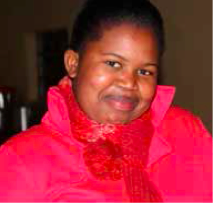 Vumeka Sisilana, Eastern Cape
Vumeka Sisilana, Eastern Cape
“The speech was very encouraging for young people because the President mentioned that government would deal with drugs in schools and build new schools.
Drugs are a serious challenge in schools and destroys the lives of many learners.”
 Seugnet Van Zyl, Gauteng
Seugnet Van Zyl, Gauteng
"I am happy that more emphasis is being placed on prioritising women empowerment and development. It would be good to see more leading women in higher positions in government."
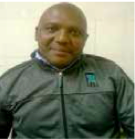 Mathews Jankies, Free State
Mathews Jankies, Free State
“I think the President touched on all important areas that affect the lives of people. Some of the important things the President said was that national government would help get rid of the bucket system and the energy system would improve. I think that there should be more projects for youth as this would eliminate the high rate of unemployment, substance abuse and teenage pregnancy.”
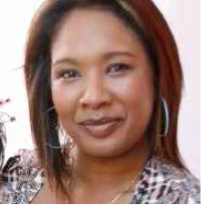 Gizelle Athman, Durban, KwaZulu-Natal
Gizelle Athman, Durban, KwaZulu-Natal
“For me the second State of the Nation Address was similar to the first address by President Jacob Zuma earlier this year. I am glad that government is providing more solutions to issues affecting South Africans such as providing water, sanitation and electricity to communities who are without these basic services.”
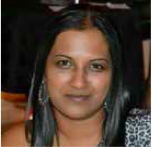 Ianessa Harman, North West
Ianessa Harman, North West
"I’m glad that government is finally addressing the energy shortage facing the country. The fact that government is looking into sustainable energy such as wind and solar over and above conventional energy is remarkable.
Hopefully this will help us boost investment and also do away with load shedding."
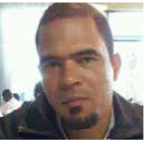 Martin Joyce, Limpopo
Martin Joyce, Limpopo
“As a young business owner I am glad that government has prioritised small business development and even created a new department dedicated to address the needs of small businesses. Providing funds for youth to start and maintain their businesses would not only address unemployment but further boost job creation in rural communities.”
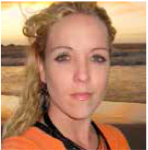 Bonnie Tubbs, Gauteng
Bonnie Tubbs, Gauteng
“I think the most recent State of the Nation ad- dress met my expectations. It did touch on the issues affecting South Africa and also focused on issues that have made media headlines recently. What stood out for me was the promise of a R847 billion investment in infrastructure over the next three years and that government is addressing the City of Joburg’s billing crisis at a national level.”
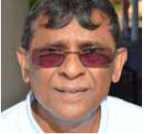 Gonnie Naidoo, KwaZulu-Natal
Gonnie Naidoo, KwaZulu-Natal
“The President’s speech was phenomenal and I found the information on job creation and education very useful. The President spoke about all the topics that we hear in our communities. The plans for the next five years look very good.”
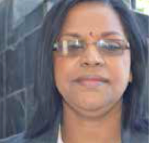 Sarojini Govender, KwaZulu-Natal
Sarojini Govender, KwaZulu-Natal
“I found the plans to assist municipalities, building of schools in the Eastern Cape, delivery of housing, water and electricity and job creation very interesting. The President’s speech adequately covered all the salient issues that communities face on a daily basis. It was truly inspiring”.
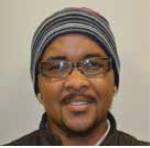 Romeo Ewerts, Western Cape
Romeo Ewerts, Western Cape
"I think the speech was reasonable and I’m glad that the President mentioned that South Africa's economic growth will get immediate attention.
The fact that the President mentioned that the youth need skills is also important. I believe the National Development Plan will help to move South Africa forward."
Sandra Mahlakoane, Mpumalanga
“I think President Zuma’s speech was very informative especially because it focused on improving education in our country. I was very interested in what he said about more bursaries and more learnerships for young people.”
SA a nation at work
SA a nation at work sadminState of the Nation Address
South Africa is a country hard at work, addressing the challenges facing it and improving the lives of its citizens.
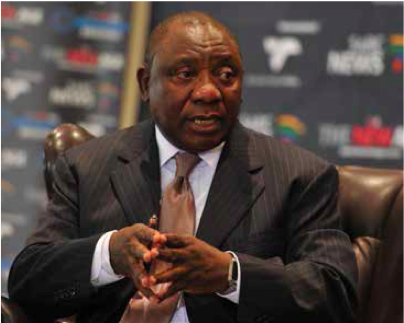 This is according to Deputy President Cyril Ramaphosa, who was speaking shortly after President Jacob Zuma delivered his State of the Nation Address recently.
This is according to Deputy President Cyril Ramaphosa, who was speaking shortly after President Jacob Zuma delivered his State of the Nation Address recently.
Speaking at The New Age/SABC business briefing in Cape Town held recently, the Deputy President Ramaphosa said despite government’s achievements over the past 20 years, South Africa still faced many challenges such as slow economic growth, inequality, poverty, unemployment, skills development and a shortage of sustainable energy.
“We are a country at work and we are working towards addressing these economic challenges that we face,” he stressed.
Echoing President Zuma’s comments, the Deputy President said that government was concerned about the low level of economic growth in South Africa.
He added that various measures would have to be put in place to grow the economy faster.
“There are a number of key factors that inhibits our growth as a country, such as the energy constraints and skills shortages. Many countries who wish to invest in our country look at our energy landscape and realise that due to the shortages it would be unfeasible for them to invest, so this is a serious problem for us.”
As a result government has declared the energy shortage a top priority to be addressed.
“We are trying to create a sustainable energy mix which will include coal, solar, wind, hydro and nuclear energy. The coal-fired power stations at Kusile and Medupi would be brought online soon to address shortages as well.”
In terms of skills, Deputy President Ramaphosa said South Africa does not have the number of engineers that the country and the economy need to drive it forward.
“We do not have the number of artisans and technicians that this country needs. We face a skills shortage in this country,” he said.
“Our economy needs to perform at a higher level and the next five years will have to be about great economic activity,” the Deputy President pointed out.
Government has set a target to grow the economy by at least five per cent by 2019.
“We can do this by creating more decent jobs in the country,” he added.
He called on the private sector to get on-board and help government create sustainable jobs.
“The private sector must invest more by creating more learnerships and internships for the youth.”
These kinds of work placements would address the skills shortage currently facing the country.
“Inequality and poverty is still a major problem for us and unemployment still affects many lives of our people. The State of the Nation Address takes place under huge economic challenges that South Africa and the world face, and therefore we will have to move with speed to address these challenges,” said the Deputy President.
In the next few years, government will focus on the implementation of the National Development Plan and the proposals made in the election manifesto of the ruling party.
“One of the key issues that we have to address is creating jobs and to achieve this, we require a fast and much more inclusive economic growth. President Zuma has indicated that we are a nation at work. We are deter- mined to work in all sectors of economy to address the economic challenges that we face,” added the Deputy President.
State of the Nation Address highlights
State of the Nation Address highlights sadmin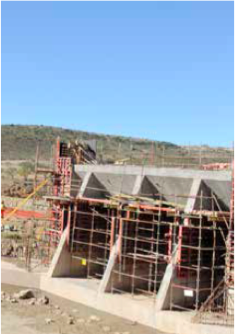 President Jacob Zuma delivered his seventh State of the Nation Address in Parliament recently, outlining his plans to take the country forward in the next five years.
President Jacob Zuma delivered his seventh State of the Nation Address in Parliament recently, outlining his plans to take the country forward in the next five years.
Here are some of the main points of President Zuma’s address:
1. The economy will take centre stage
“It remains our strong belief that the most effective weapon in the campaign against poverty, is the creation of decent work, and that creating work requires faster economic growth. We have set a growth target of 5 percent by 2019.
2. The mining sector will receive attention
“We will implement the undertaking to build housing and other services to revitalize mining towns, as part of the October 2012 agreement between business, government and labour. The focus is the mining areas of Motlosana, Emalahleni, Sekhukhune, Lephalale, West Rand and Matjhabeng…[Mining] companies are expected to convert or upgrade hostels into family units, attain the occupancy rate of one person per room and also facilitate home ownership options for mine workers.”
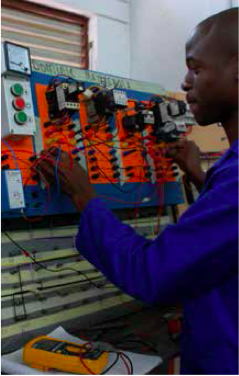 3. Energy will be given prominence
3. Energy will be given prominence
“Work needs to be done at a technical level on all forms of energy especially nuclear energy and shale gas with regards to funding, safety, exploitation and the local manufacture of components.”
4. Infrastructure will be scaled up
“We will continue to implement the successful National Infrastructure Plan… Over the next three years, we will spend 847 billion rand on the infrastructure and several projects are to be started or completed.”
5. Youth employment and empowerment will be prioritised
“Youth empowerment will be prioritised in our economic transformation programme. Government will introduce further measures to speed up the employment of young people, consistent with the Youth Employment Accord. We will expand the number of internship positions in the public sector, with every government department and public entity being required to take on interns for experiential training.”
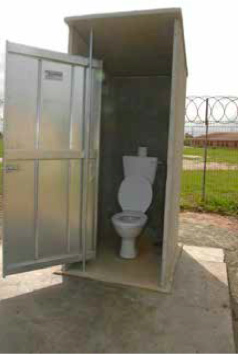 6. Labour relations will be high on THE agenda
6. Labour relations will be high on THE agenda
“… we will during this term investigate the possibility of a national minimum wage as one of the key mechanisms to reduce the income inequality. Deputy President Cyril Ramaphosa will convene the social partners’ dialogue, within the ambit of National Economic Development and Labour Council (NEDLAC).”
7. Will work with business
“We will continue to engage business in promoting inclusive growth and to build a more prosperous society. In this regard, I will soon convene a meeting of the Presidential Business Working Group…. We will continue to support through incentives, the competitiveness of the auto, clothing, leather, footwear and textile industries, which are labour intensive.”
8. Support will be given to small business
“Over the next fi years, we will prioritise support to small business, as well as township and informal sector businesses in particular, thus using the SMME development programme to boost broad-based black economic empowerment.”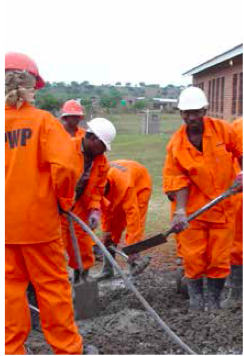
9. Bucket system will be eradicated
“Work is underway to eradicate the bucket sys- tem throughout the country. This will also be the priority of the Inter-Ministerial Task Team on Service Delivery that I have established. The team is led by Minister [of Cooperative Governance and Traditional Affairs] Pravin Gordhan.”
10. EPWP will be a priority
“Government has since 2004 run the successful Expanded Public Works Programme which provides work opportunities and training for the unemployed. The new phase will provide six million work opportunities by 2019…. In addition, the local government-based Community Work Programme will be expanded to provide a million work opportunities by the end of 2019.”
11. Help will be given to smallholder farmers
“Government will provide comprehensive support to smallholder farmers by speeding up land reform and providing technical, infrastructural and financial support.”
12. Attracting more tourists to SA
“We have set a target to increase the number of foreign visitor arrivals to more than 15 million annually by 2017. We are also looking at increasing the contribution of tourism to the country’s revenue to more than 125 billion rand by 2017.”
13. University entrants will be increased
“We will increase the number of Grade 12 learners who can gain entrance to university, moving from 172 000 in 2013 to 250 000 in 2019.”
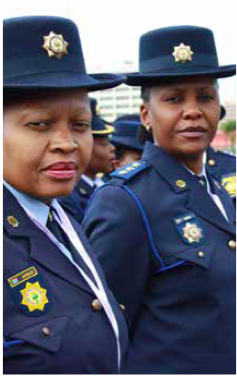 14. Women’s empowerment will be advanced
14. Women’s empowerment will be advanced
“We will take forward the advances we have made in promoting women’s empowerment and development. To further consolidate our democratic gains, we will continue to advance and improve the lives of people with disabilities over the next five years.”
15. Reducing the levels of crime will continue
“The Special Investigating Unit, the Anti-Corruption Task Team, the Asset Forfeiture Unit and the Hawks, have made notable progress in our quest to combat corruption in society broadly and in the public sector. This work will continue in the next five years.”
16. The constitution will be promoted in schools
“We will also continue to promote the Constitution in schools and ensure that our children grow up with positive values and love for their country and its people.”
Cabinet Ministers ready to deliver
Cabinet Ministers ready to deliver sadminState of the Nation Address
President Jacob Zuma’s State of the Nation Address has been received with enthusiasm by a number of Ministers, who will now set out to deliver on the President’s promises.
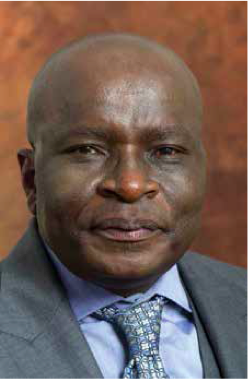 Ministers who spoke to Vuk’uzenzele said they were happy with the issues emphasised by the President, saying the address highlighted what needs to be done to deal with the problems facing South Africa 20 years into democracy.
Ministers who spoke to Vuk’uzenzele said they were happy with the issues emphasised by the President, saying the address highlighted what needs to be done to deal with the problems facing South Africa 20 years into democracy.
Mining sector
Newly appointed Mineral Resources Minister Ngoako Ramatlhodi, who was previously the Deputy Minister of Correctional Services, welcomed President Zuma’s pledge that government would build houses and provide other services to revitalise mining towns.
President Zuma announced that mining companies would soon be expected to convert or upgrade their hostels into family units and facilitate home ownership options for mine workers.
Government was also monitoring the compliance of mining companies with Mining Charter targets, relating to improving the living conditions of workers.
To assist the monitoring process, President Zuma said an Inter-Ministerial Committee had been established, chaired by Minister in the Presidency Jeff Radebe, and tasked with the Revitalisation of Distressed Mining Com- munities.
Members of the committee include the Ministers of Mineral Resources, Water and Sanitation, Trade and Industry, Social Development, Labour, Human Settlements, Health, Economic Development and Finance.
“We need to address the socio-economic challenges faced by mining towns and mining workers themselves, that is where the root of problems lies, ” said Minister Ramatlhodi
He added that he was working with a team of Ministers to bring about stability in mining sector and improve the quality of life for miners. “What the President’s speech did was to emphasise on certain actions that will have to be done,” Minister Ramatlhodi said. President Zuma also said that given the impact of the labour relations environment on the economy, it was critical that social partners met to deliberate on the violent nature and the duration of the strikes.
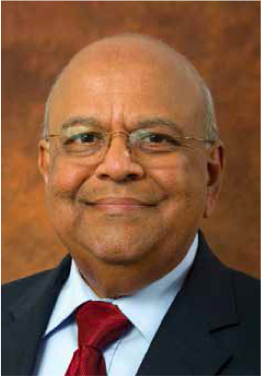 “We believe labour relations need to be strengthened. We have sound labour relations practices in this country and we will continue to ensure that relations between workers and employers and indeed government are continuously improved,” said Minister Ramatlhodi.
“We believe labour relations need to be strengthened. We have sound labour relations practices in this country and we will continue to ensure that relations between workers and employers and indeed government are continuously improved,” said Minister Ramatlhodi.
Revitalising municipalities
In his State of the Nation Address President Zuma also unveiled government's plan of action to revitalise local government. He said all municipalities had been evaluated and inspected on all aspects from finance to service delivery rollouts.
Despite the successes in many municipalities, others faced many challenges, said President Zuma. He pointed out that 11 municipalities received good performance audits on expenditure and service delivery.
However, five district municipalities and eight local municipalities would receive extra support from government in areas where they were most needed. These include infrastructure development, water, sanitation and electrification.
Work was also underway to eradicate the bucket system throughout the country. To help local government, an Inter-Ministerial Task team on service delivery, led by newly appointed Cooperative Governance and Traditional Affairs Minister Pravin Gordhan, had been established.
He said his department would pull out all the stops to ensure that local government worked more efficiently.
“Municipalities need to listen to the people more and respond to challenges quicker,” he pointed out.
In light of recent municipal protests that have turned violent, Minister Gordhan said: “Municipalities need to respond to people by listening carefully and responding with a greater sense of urgency and making sure that when they raise a problem, we go sort it out instead of allowing it to accumulate over time.”
He added that municipalities needed to govern better and follow the rules.
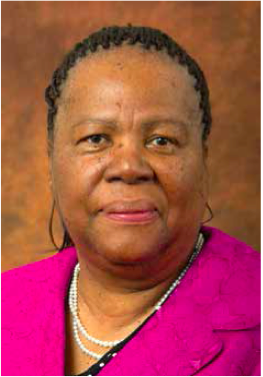 “We need to make sure that we have competent officials and technical capabilities. In smaller municipalities and districts, we have to make a greater effort to get people like engineers and planners - particularly at district level - so that smaller municipalities can access those services,” said Minister Gordhan.
“We need to make sure that we have competent officials and technical capabilities. In smaller municipalities and districts, we have to make a greater effort to get people like engineers and planners - particularly at district level - so that smaller municipalities can access those services,” said Minister Gordhan.
Science and technology
Government has, in the past fi years, invested a trillion rand on new infrastructure to provide water, energy, transport, sanitation, schools, clinics and internet connections for South Africans, President Zuma said.
He announced that an additional R847 billion rand would be spent on the completion of several infrastructure project over the next three years. One such project is the Square Kilometre Array telescope, overseen by the Department of Science and Technology (DST). “In the next five years we will finish building more than 60 MeerKat dishes and start building the first 100 Square Kilometre Array dish antennas,” the President said.
Recently appointed Science and Technology Minister Naledi Pandor will oversee these projects. After serving a stint as Minister of Home Affairs from 2012 to 2014, she returns to the DST, which she previously headed up. Minister Pandor recently stressed her department plans to implement government’s mandate through the National Development Plan.
“Government’s priorities with regard to growing the economy are tackling unemployment, inequality and poverty. We will continue to focus on overcoming the challenges facing the South African science, technology and innovation sector, including human capital development and continue modernising scientific infrastructure such as laboratories and IT equipment, so that we can unlock the potential of science, technology and innovation to contribute to economic growth.”
She said the DST would focus on skills development, knowledge generation, providing access to research and development infrastructure and encourage the advancement of international cooperation in science, technology and innovation in Africa and the rest of the world.
Through its workplace preparation programmes the DST creates opportunities for 700 youth each year. This number will soon grow to 1 000 with the department investing R400 million rand per year, said Minister Pandor.
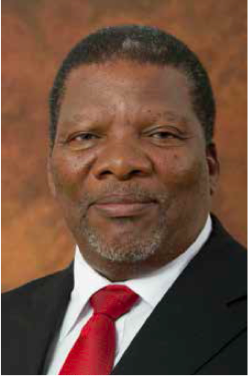 “It is important that we transform the science, technology and innovation sector so that we can tap the potential of all South Africans. We need to attract and retain research excellence and create career pathways for highly skilled young researchers, particularly black and women scientists,” she added.
“It is important that we transform the science, technology and innovation sector so that we can tap the potential of all South Africans. We need to attract and retain research excellence and create career pathways for highly skilled young researchers, particularly black and women scientists,” she added.
Tackling urbanisation
President Zuma also highlighted that South Africa was becoming an urban country and that by 2011 almost 63 per cent of the population were living in towns and cities.
Tackling the process of urbanisation is the task of Minister of Rural Development and Land Reform Gugile Nkwinti.
Reacting to President Zuma’s address, the Minister said that revamping rural areas and towns would ease pressures associated with rapid urbanisation, where people leave rural areas to go to urban cities to seek economic opportunities.
“Urbanisation is an international phenomenon and is not something that can be easily stopped. We have a good relationship with China and they have a programme called Township and Village Enterprises, where they actually create industries in rural areas,” he said.
Minister Nkwinti said a team from his department was recently sent on a learning mission to China to see first hand how the Chinese do it and return to implement their ideas. “We are considering the options that they brought back because we want to learn from young people,” he added.
The Minister said his department would create mega cooperatives for young people from rural areas to do construction and transform them into a class of black industrialists to create more jobs and build social infrastructure.
Make every day a Mandela Day
Make every day a Mandela Day sadmin“As we mark International Mandela Day…let us begin planning for a major clean- up of our cities, towns, townships, villages, schools and beautify every part of our country.”
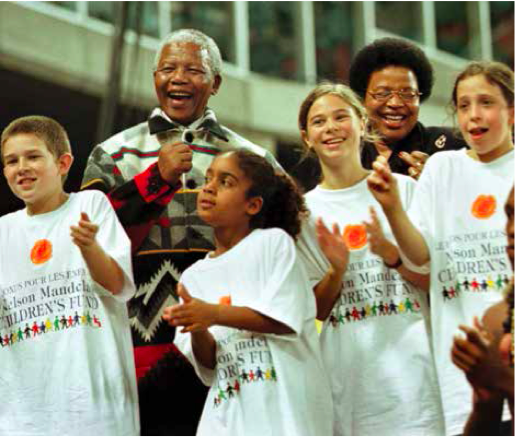 President Jacob Zuma issued this call in his State of the Nation Address recently, encouraging South Africans to dedicate at least 67 minutes of their time on 18 July, to clean the country in honour of the late former President Nelson Mandela.
President Jacob Zuma issued this call in his State of the Nation Address recently, encouraging South Africans to dedicate at least 67 minutes of their time on 18 July, to clean the country in honour of the late former President Nelson Mandela.
President Zuma announced that government’s theme for this year is to clean South Africa. Seven months after the death of Madiba, his legacy will once again be honoured as the worldwide community reaches out to those in need on Nelson Mandela International Day.
Celebrated across the world in honour of the Madiba’s birthday on 18 July, Mandela Day is an international call to bring positive change to communities. The day aims to empower communities everywhere through the slogan ‘Take Action; Inspire Change; Make Every Day a Mandela Day’.
The campaign asks that individuals, groups, corporates and the public sector pledge 67 minutes of their time on 18 July and every day after that to give back.
Also as part of the country’s 20 Years of Freedom and democracy celebrations, President Zuma highlighted that during Mandela Month records turning 20 years this year, such as those of the late former President Nelson Mandela's first days in office will be transferred to the National Archives.
He also urged South Africans to work hand in hand with government to make the Mandela legacy programmes, such as education and literacy, a success not just on Mandela Day but every day of the year.
“Government’s programme of action is aimed at making South Africa a better place for all and we urge all South Africans to work with us to make the implementation of the Mandela programmes a success. Together let us move South Africa forward,” said the President.
Madiba magic
According to Sello Hatang of the Nelson Mandela Foundation, the idea behind Nelson Mandela International Day started after President Mandela visited the United Kingdom in June 2008 to mark his upcoming 90th birthday at a concert in London.
Addressing a crowd of over 50 000 people at the concert, President Mandela pointed out there was still much work to be done.
“Where there is poverty and sickness, including AIDS, where human beings are being oppressed, there is more work to be done. Our work is for freedom for all. After nearly 90 years of life, it is time for new hands to lift the burdens. It is in your hands now,” he said at the time.
And with that, the idea of Mandela Day was born.
In 2009 the United Nations declared President Mandela’s birthday as Nelson Mandela International Day.
“We as the foundation thought it appropriate to link Madiba’s call for everyone to do what they can to improve the world with a symbol of his service. We chose 67 minutes as symbolic of the fact that Madiba had spent 67 years in service to humanity,” explained Hatang.
This idea came from Mandela himself, said Hatang. “He cautioned not to turn July 18 into a public holiday but asked that it be a day of service instead.”
Despite the great work done on Mandela Day and during Mandela Month, Hatang said, it was important for South Africans to incorporate the Mandela Day spirit into their daily lives.
“Since the first Mandela Day we have been moving away from marking just one day and just 67 minutes, the symbolism of Madiba’s birthday is important and should be celebrated all year round to do good.”
Sustainable projects
Those who want to make a difference should invest their efforts in sustainable projects, Hatang added.
“Important issues like youth upliftment and women empowerment are crucial to the well-being of our society. It would be to our advantage to incorporate the importance of these issues into the very fabric of our being as individuals and as a country.
“Madiba followed three rules throughout his life which he did at great personal sacrifice - free yourself, free others and serve every day. If his legacy is to be dynamic and continue to have an effect it must be owned by current and future generations. His legacy must be accessible and carried on by everyone,” Hatang pointed out. He also cautioned South Africans not to turn Mandela Day or Month into a money-making scheme.
“If money is spent, let it be on creating sustainable projects that positively impact the lives of those less advantaged. In each and every step we take we turn to Madiba’s legacy for our answers. It is from his legacy that we are inspired by the message of service. It is what he lived, a leadership of service.”
This year, the foundation has chosen food security, education, literacy and shelter as the focus of Mandela legacy projects.
It has set a goal to distribute 670 000 food parcels to the needy by 2016 and ensure that learners who depend on one meal a day from school enjoy the same benefit during the long school holidays.
The foundation is also committed to establishing more food gardens, which would help sustain communities.
In keeping with Madiba’s passion for education, the foundation launched the Mandela Day Container Libraries project in May at the Sohlazane Primary School in Tjakastad, Mpumalanga.
The library features 15 tablet computers loaded with eBooks, internet access and the registered Curriculum and Assessment Policy Statement (CAPS) curriculum.
On July 18, Mandela Day, dedicate 67 minutes to clean South Africa
New centre to empower black farmers
New centre to empower black farmers sadminA R60 million multi-purpose training and development centre to be built at the Agricultural Research Council (ARC) in Roodeplaat, Pretoria, is expected to give the up- and-coming black commercial farmers a boost.
Speaking after the sod-turning ceremony at the centre recently, Rural Development and Land Reform Minister Gugile Nkwinti said: “With this new multi-million rand facility, our objective will be to rekindle that class of commercial farmers destroyed by the Native Land Act.”
The event coincided with the handing over of certificates to 2 000 graduates who successfully completed a training programme on vegetable and livestock production at the Roodeplaat training facility.
According to Minister Nkwinti, the new facility, which should be built over the next few months, would complement his department’s flagship programme for young South Africans, the National Rural Youth Service Corps (Narysec).
The Narysec was established in September 2010, with its main goal to recruit and develop rural youth to perform community service in their own communities. The Narysec headquarters are in Thaba Nchu in the Free State.
“We are creating a class of black people who are going to run the country’s economy over the next decade. It will actually anchor them because scientific training will be done here. They will go to Thaba Nchu to implement the theoretical part they have learnt at the new facility. We are looking forward to this facility to sustain our programme of empowering young people,” the Minister said.
He said the biggest challenge facing South Africa was the threat of food security.
“We don’t seem to appreciate the challenge because we can go to the market and buy whatever food we want to eat. However, there are many people who cannot afford it. I’m talking about people who go to bed without having a meal.
“We need to produce young farmers who can grow vegetables, produce meat and those who can also look after the environment to ensure that the environment around us can carry us through to the next 100 years.
“Again, if we continue to import food that we can also produce ourselves - then it means we will be exposing ourselves to a serious challenge of food security for the next 50 years. As government, we want to reverse this,” he said. The multi-purpose training and development centre will be built through a partnership between the department and the ARC.
ARC CEO Dr Shadrack Moephuli explained that the ARC was involved in research and development of new scientific solutions and technologies.
Part of the challenge was finding the best ways to deliver these technologies, information and data to the people who needed to use it.
“We saw it appropriate that we contribute towards the success of agriculture, particularly land reform. We will provide them with the training so that they can be productive themselves, understand the use of technology, how to respond to the needs of consumers, but also how to ensure to identify the diseases at their respective farms and solve the problems on their own.
“We got into this partnership so that we can have a cadre of fairly successful farmers, who will be very productive by themselves,” he said.
To be considered for enrolment into NARYSEC, a youth must meet the following criteria:
- Must be in the 18 to 35 age group.
- Must have completed Grade 10, 11 or 12.
- Must be living in a rural area.
- Must be committed to staying in the programme for 48-months.
NARYSEC uses conventional methods of advertising on local media for applications.
Application forms for enrollment at NARYSEC can also be obtained from your nearest Department of Rural Development and Land Reform and municipal offices.
The forms can be accessed on the department's website on www.ruraldevelopment.gov.za or call 012 312 9671.
Thanduxolo Specialised School a beacon of hope
Thanduxolo Specialised School a beacon of hope sadminAs one of its key priorities, Government is extending access to education by building schools that will cater for learners with special needs. Thanduxolo Specialised School in Mpumalanga is one of those schools.
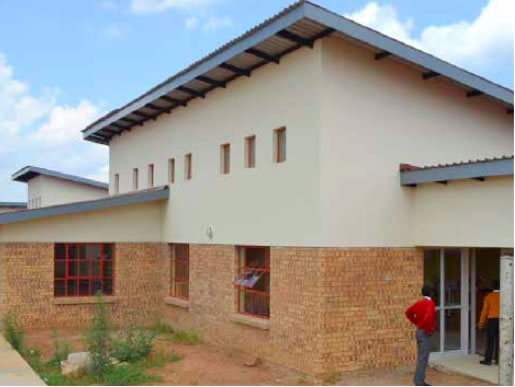 The Thanduxolo Specialised School in Witbank is changing the lives of its 345 learners.
The Thanduxolo Specialised School in Witbank is changing the lives of its 345 learners.
It is the province’s first state-of- the-art special school, built by the Mpumalanga Department of Education. It offers subjects such as self-care, socialisation, work skills and job preparation programmes such as woodwork, painting, beauty and cooking.
Gugu Magagula, 18, has finally found a place where despite her learning difficulties, she can thrive in her beauty classes and unleash her talent for making people look and feel good.
When Gugu was in a mainstream high school, she struggled to cope with the workload and had great difficulty understanding what she was taught. Since enrolling at Thanduxolo, she is happy and excelling at what she loves most - beauty treatments.
“In her spare time Gugu is always spoiling learners with manicures and beauty treatments that she learnt during class,” said the school’s principal Fufununu Habile.
She says Gugu’s progress has made her father Aaron Magagula so proud that he is currently setting up a salon at home so that once Gugu finishes school, she would be able to earn a living.
Habile says her greatest joy comes from seeing the change in learners as they gain confidence and realise a sense of self-worth. “Many of our learners suffer from physical and academic disabilities, yet their passion to succeed and belong is unleashed at our school.”
Most of the learners at the school are academically impaired.
“This means that our learners’ mental age differs to their actual age. They have great difficulty understanding a mainstream curriculum, so we have adopted a specialised curriculum that plays to their practical strengths rather than their theoretical weaknesses,” explains Habile.
The unique subjects offered at the school help the learners, aged seven to 18, learn life and practical skills.
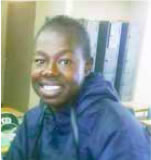 The older learners, says Habile, are ex- posed to various workshops so that they learn skills that would allow them to find work once they leave the school.
The older learners, says Habile, are ex- posed to various workshops so that they learn skills that would allow them to find work once they leave the school.
“As teachers, we have to be proactive about the lives of our learners. We have to prepare them for the outside world and ensure that once they leave, they are able to fend for themselves, find a job and make a living,” she adds.
As part of the work attachment programme, the teachers network with local businesses to find learners employment.
“Our teachers are priceless, they go above and beyond for our learners. Working with children with special needs requires a teacher who is passionate, patient and loves what they do. All 14 of our teachers fit that bill, which is why our learners show such improvement.”
According to the Habile, one of the major challenges is that learners are left demoralised by their community or families who do not understand how to cope with their learning abilities.
“This is why we try to unlock learner’s capabilities and through that we change the way communities react to learners like ours. Every child has the ability to be great and with the correct guidance our learners are able to create a better life, not only for themselves but for their families as well.”
Construction of the R39 million school began in February last year and fi months later it opened its doors, as a beacon of hope to the Mpumalanga communities of Kwaguga, Mhluzi, Ogies, Phola, Klarinet and surrounding villages.
According of the department, the school was built to ensure that learners with special needs also benefited from the country’s school system and the right to education.
Thanduxolo Specialised School is one of 18 special schools in the province. It has 10 classrooms, four workshops an administration block, two garages and a sports ground.
Better prospects for FET graduates
Better prospects for FET graduates sadminFurther Education and Training (FET) graduates could soon find it easier to get a job, thanks to a new graduate placement programme in the Free State and KwaZulu-Natal.
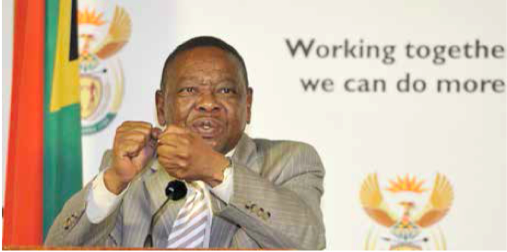 The launch of the programme in these two provinces follows the successful introduction of a similar one in Gauteng, and is a response to President Jacob Zuma’s call to make workplaces available to young people for learning purposes.
The launch of the programme in these two provinces follows the successful introduction of a similar one in Gauteng, and is a response to President Jacob Zuma’s call to make workplaces available to young people for learning purposes.
The FET Graduate Placement Programme will see graduates being placed at provincial government offices, municipalities and in the private sector, where they are expected to receive on-the-job training.
Higher Education and Training Minister Blade Nzimande said the placement of graduates of FETs, which are also known as Technical and Vocational Education and Training (TVET) colleges, was part of the department’s strategy to create a smooth transition from institutions of learning to workplaces.
The programme’s goal, which is rooted in the National Skills Development Strategy, is to turn every workplace into a training space, said the Minister.
Currently, more than 3.4 million young people between the ages of 15 and 24 are not in employment, education or training.
“This is why special intervention programmes, like this one, is required to develop skills so that our youth become part of the mainstream economy,” said Minister Nzimande.
Exposing graduates to a workplace environment improves their skills and boosts their credibility, the Minister pointed out. “Work integrated learning and the placement of TVET learners, university of technology graduates and out of school youth is a critical component of the Department Education and Training’s (DHET) skills trajectory in terms of empowering and developing our youth,” he added.
As part of the programme, the DHET works closely with FET colleges to identify graduates for work place placement once their studies are completed, to give them a chance to gain experiential training.
In the Free State, 1 962 students are set to benefit from the programme, while in KZN it will provide opportunities to 2 655 students from nine TVET colleges and 504 from the Durban University of Technology.
Sector Education and Training Authorities (SETAs) and the private sector will help the graduates fi work and will also contribute to the stipend they receive.
According to Minister Nzimande, TVET student enrolments have increased by 131 per cent from 345 566 in 2010 to a current 800 000 in 2014.
“Our enrolment targets by 2030 are 1.62 million in public universities, 2.5 million in TVET colleges, 1 million in community colleges and 500 000 in private institutions,” he said.
The National Student Financial Aid Scheme (NSFAS) has allocated R6 billion for the 2014/15 financial year, which includes R3.9 billion for universities and R2.1 billion for TVET college bursaries and loans.
Achievements
Since the establishment of the DHET, great strides have been made in im- proving placement of college graduates. These measures include:
- Signing the National Skills Accord in 2011, with stakeholders such as business and government, on students’ placement in the workplace.
- Establishing the Chief Directorate of Work Integrated Learning Partnerships and Innovation in 2012 to focus specifically on strengthening partnerships for the placement of students.
- Signing the Youth Employment Accord in 2013, with commitment to focus on work exposure.
- Partnering with the Department of Public Service and Administration to coordinate placement of graduates in the public service.
- Opening SETA offices in TVET colleges with a focus on townships and rural colleges. Currently, there are more than 40 SETA offices at TVET colleges. TVET graduate placements, internships and learnerships remain a high priority for all SETAs.
- Revising the Levy Grant Regulations to provide room for employers to take in unemployed graduates using SETA grants. Statistics from January to December 2013 show that since the implementation of the new grant regulations, the programme has seen an increase of 10 714 in the placement of TVET college graduates in the country.
What you need to know about HPV
What you need to know about HPV sadminGrade 4 schoolgirls across the country are being vaccinated against the Human Papilloma Virus (HPV) after the Department of Health launched the HPV vaccination campaign.
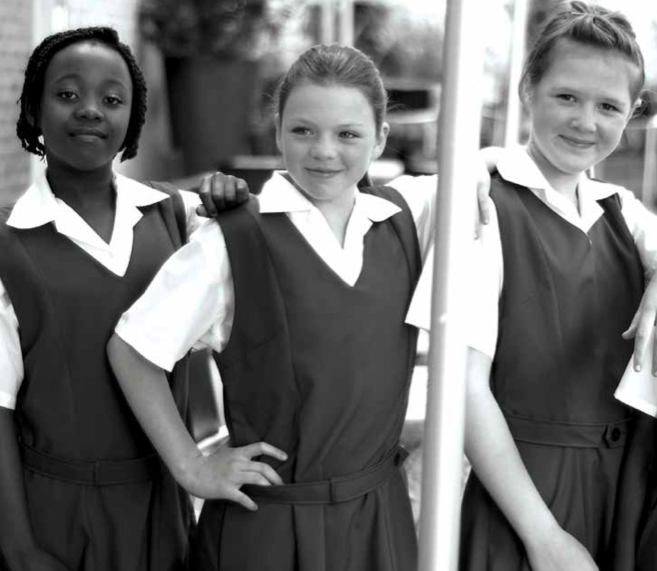 South Africa took a major step in the safeguarding of women’s health through the campaign, which will protect young girls from getting cervical cancer caused by the HP-virus.
South Africa took a major step in the safeguarding of women’s health through the campaign, which will protect young girls from getting cervical cancer caused by the HP-virus.
An estimated 500 000 girls in 17 000 schools will be vaccinated.
Vuk’uzenzele takes a look at what you need to know about HPV and the campaign.
What is HPV?
HPV is a very common virus that infects most people at some time in their lives. There are many types of HPV. Some of the virus types can infect our cells that could eventually lead to cancer.
Who can get HPV?
Anyone who is sexually active can get HPV (both men and women). A person infected with HPV can pass it on to his/her intimate partner.
What is cervical cancer?
Cervical cancer is a cancer that affects the cervix, which is the lower part of the womb. Cancer is when abnormal cells in the body start to grow very quickly and cannot be controlled by normal body processes. Over time, normal cells are replaced by cancer cells and without early diagnosis and treatment the person may die.
How can you confirm if a person has cervical cancer?
A special test, called a PAP smear, is required to detect if a person has early signs of developing cervical cancer. The cells from the cervix are collected and sent to laboratory for testing.
Has the HPV vaccine been thoroughly tested and used before?
The HPV vaccine has been tested and used in many other countries. It is a World Health Organisation recommended vaccine and is currently used in more than 130 countries.
The Medicines Control Council of South Africa has registered this HPV vaccine, after confirming that it is safe for use.
How safe and effective is the vaccine?
The HPV vaccine used in South Africa is very safe and effective in preventing the HPV-16 and HPV-18 strains of the virus.
What is the HPV vaccination campaign?
The Department of Health, together with the Department of Basic Education, is introducing a HPV vaccination campaign in schools. This is part of the Integrated School Health Programme. Nurses will visit schools to vaccinate Grade 4 girls.
Who is going to vaccinated during the campaign?
Schoolgirls who are in Grade 4 and are nine years and older will be vaccinated.
Why are only grade 4 girls being vaccinated?
This vaccine is most effective in young girls who are at least nine years old. As the entry requirement for Grade 1 is seven years old, most girls in Grade 4 will be between nine and 10 years old. Grade 4 has been identified as the most suitable grade to start vaccination.
Why are boys not given The HPV vaccine?
This campaign aims to prevent cervical cancer, which occurs only in women.
Why should girls be vaccinated against HPV?
The HPV vaccine is important to protect against HPV infection that could lead to cervical cancer later in life.
Do learners need consent from their parents/guardian to be vaccinated?
Yes. Parents/guardians need to provide signed consent for the vaccination. Girls who are 12 years and older have to agree themselves.
Where is the HPV vaccination campaign going to be conducted?
The vaccination will be administered in schools to Grade 4 girls across the country. Special schools will also be covered and in these schools girls born in 2004 will also be vaccinated.
Who will be administering the vaccines?
There will be trained teams of health workers who will be visiting schools to vaccinate Grade 4 girls.
Human Papilloma Virus:
- is very common infectious agent
- has no visible symptoms, most infections will go away without causing illness
- causes most cases of cervical cancer
- is most likely to infect adolescent girls and young women
- is transmitted during sexual activity.
Cervical cancer:
- is one of the most common cancers affecting women in South Africa
- is the second most common cancer in South Africa
- only affects women
- a special screening test is required to detect cervical cancer
- if not detected at an early stage it is difficult to treat cervical cancer and it often results in death.
HPV vaccine:
- prevents infection from HPV strains which cause most cervical cancer
- is most effective in young girls who have not yet come into contact with HPV
- is safe and effective
- has been used in many countries
- requires two correctly spaced doses (months 0 and 6).
HPV vaccine cannot:
- treat or cure HPV infection – it is for prevention only
- treat or cure cervical cancer
- prevent or treat human immunodeficiency (HIV) infection
- prevent or end pregnancy – HPV vaccine is not a method of family planning.
Statistics on HPV:
- The incidence rate of cervical cancer in South Africa is reported between 22.8 and 27 per 100 000 women compared to the global average of 15.8.
- Annually there are some 5 743 new cases reported with 3 027 associated deaths in South Africa.
- 99 per cent of cervical cancers are associated with HPV.
- About seven in every 10 people will have HPV at some point in their lifetime.
- Two strains of HPV (HPV-16 and HPV-18) are found to cause over 70 per cent of cervical cancer cases.
- HPV-16 and HPV-18 strains are vaccine-preventable.
- The World Health Organisation has recommended vaccinating girls before they are sexually active (between 9 to 13 years).
Parliament is for the people
Parliament is for the people sadminParliament is one of the important institutions in a democratic setup, responsible for making laws, electing a President and holding government accountable.
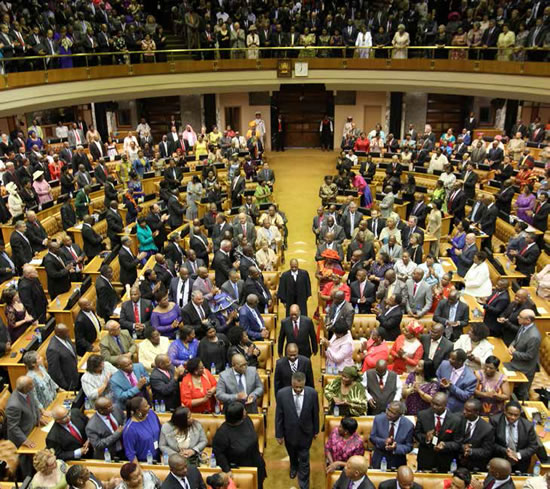 In South Africa, Parliament is divided into two houses - the National Assembly and the National Council of Provinces (NCOP).
In South Africa, Parliament is divided into two houses - the National Assembly and the National Council of Provinces (NCOP).
The National Assembly is led by the Speaker, who is responsible for matters relating to the work of Parliament. The National Assembly is made up of Members of Parliament (MP), who are from all the political parties represented in Parliament. Ministers, deputy ministers, chief whips and whips also make up Parliament.
The second house, the NCOP, is responsible for the law making process and provides a forum for debating issues affecting the provinces.
Its main focus is to ensure that provincial interests are taken into account at the national sphere of government. This house is led by the Chairperson, who oversees its smooth running.
Over the past 20 years, Parliament has moved from being a secretive institution under apartheid to being more inclusive and transparent.
According to public education practitioner at Parliament, Kenneth Bange, Parliament now includes the public in its activities.
“This has been done to make sure that ordinary South Africans become part of the proceedings unlike the government before 1994, which was aloof and no one knew what was happening,” he explained.
Bange has been working at Parliament for the past 20 years. He started there in 1994, running errands for MPs and was later an administration clerk.
Bange was one of the fi tour guides when Parliament started a tour unit in 1997. Later he became a public education practitioner.
According to Bange, it was the late former President Nelson Mandela’s idea to include the public in the proceedings.
“I’m told that Mr Mandela was the one who suggested a civilian guard of honour during the State of the Nation Address because in the past it was mostly a military affair,” he said.
The first building that housed Parliament was constructed in 1885 and is currently used for various committee meetings. Henry Grives was the architect of that building. The second building, which houses the National Council of Provinces, was built in 1910 by the Union of South Africa and was designed by Sir Herbert Baker.
The last building, which is the current chamber where Parliament sits during important events such as the State of the Nation, was built in 1985 and was designed by different architects, said Bange.
Among the notable changes that Parliament has gone under since 1994, is the establishment of a tour unit, the use of all official languages, increased access by the public and a bigger staff complement.
Bange said most people think that the National Assembly is the only important house and visitors prefer it to the NCOP.
“There is still that misconception that the NCOP is a poorer cousin of the National Assembly. That is not true, both houses are important and they both perform their roles in different ways,” he explained.
Bange added that many people believe Parliament’s responsibility is only to pass laws and rubberstamp the word of the ruling party.
“Parliament does not only pass laws. It plays an oversight role, scrutinising and assessing the impact of government policies. It also ensures that government remains true to its policy commitments and is ac- countable to the people,” he said.
Wireless network opens doors for N Cape learners
Wireless network opens doors for N Cape learners sadminEducation for learners in about 50 schools in the Northern Cape is set to become more exciting, thanks to the introduction of a wireless network in the area.
The then Science and Technology Deputy Minister Michael Masutha launched the wireless network, which will give thousands of learners in the JT Gaetsewe District Municipality access to the internet.
The Wireless Mesh Network (WMN) project is an initiative of the Department of Science and Technology (DST) aimed at demonstrating alternative models in establishing information and communication technology (ICT) infra- structure in rural areas.
The project is funded by the European Union and implemented by the Council for Scientific and Industrial Research’s Meraka Institute.
Speaking at the launch held at Learamele Special School, the then Deputy Minister Masutha said having access to ICT would help rural communities to access information. “These days it is common knowledge that ICT has a positive impact on people’s lives.”
He said a number of ICT projects were being introduced to improve education.
“As a department, in partnership with other stakeholders, we have developed a 10-year roadmap,” he said.
A Grade 9 learner from nearby Iketletso Middle School, Thato Kgosierileng, expressed his excitement at having access to the internet.
“Now am able to search for information on the computer without having to go to the library,” he said.
Thato, who started using a computer for the first time at school, said the few hours he had spent on it were very informative.
“With a computer, one can do a lot of things in a short space of time,” he said.
A teacher at Learamele, Boitshoko Bannane, said the use of computers would expand learning possibilities.
“This will help … learners conduct research. I have also noticed that the learners have developed a great deal of interest in learning using computers,” he said.
Education district director Vuyisile Teise said the introduction of computers would improve the learning process. “The learners will now be able to download information from computers. Everything is now at their fingertips,” he said.
The DST launched the initial phase of this initiative in Sekhukhune in Limpopo and Ekangala in Mpumalanga in 2010, connecting 212 public facilities including schools, circuit offices and colleges.
KZN, E Cape courts get a face-lift
KZN, E Cape courts get a face-lift sadminThe Department of Justice and Correctional Services is ensuring that residents across the country have access to justice services by renovating courts.
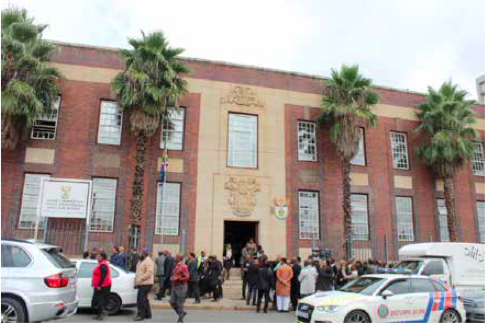 The latest courts to receive a face-lift are in the Eastern Cape and Kwa-Zulu-Natal.
The latest courts to receive a face-lift are in the Eastern Cape and Kwa-Zulu-Natal.
In the capital city of KwaZulu-Natal, the department unveiled the renovated Pietermaritzburg Magistrate Court on which R57 million was spent. Work at the court started in 2008 and finished in 2013. This included a new sexual offences court and the creation of more office space.
Community member Nikiwe Masikane hopes improvements will put a dent in crime in the area.
“The opening of this court will help fight crime in this area. We don’t have to worry about spending too much money on trans- port to attend court cases. We are happy that criminals will be prosecuted and no time will be wasted.”
The then Minister of Justice and Constitutional Development Jeff Radebe, who has since become the Minister in the Presidency, urged community members to make use of the services offered at the Pietermaritzburg Magistrate Court.
“Crime, violence and all forms of sexual offences can only decrease not because of these facilities working alone, but through the concerted will of all our people as a whole - working together to move South Africa forward,” said the Minister.
He added that the court had dealt with 17 675 criminal cases alone in 2013.
“In the same year, there were 1 385 maintenance cases and 18 999 civil cases.”
The court also dealt with 447 sexual of- fence cases, 2 583 small claims cases and 575 children’s cases during the same year. “This is certainly a busy court and this is what we mean when we speak of access to justice for all,” Minister Radebe said.
The 76-year-old court is one of South Africa’s historic colonial buildings. It was at this court that the late former President Nelson Mandela appeared in 1962 after he was arrested in Howick on charges of leaving the country without a passport and calling on workers to strike.
Over the years, the court has sat in three different areas creating challenges for the community who had to travel there. With the recent renovations, the court can house all staff and services at one building.
In the Eastern Cape, the Gelvandale Magistrate’s Court in Port Elizabeth was also launched after it was renovated at the cost of R45 million.
Resident Rosy Goena said gangersterism was a huge problem in Gelvandale and she hoped the new court would play a role in addressing it.
“I am hopeful that the court will make sure justice is served and innocent people are protected from gangsters,” she added. The court now has three courtrooms that deal with criminal matters. Services such as family, maintenance and domestic violence will be offered to not only the Gelvandale community but also to surrounding areas like Helenvale and Bethelsdorp.
Minister Radebe encouraged communities to rally behind the task teams established to deal with the scourge of gangsterism in their area.
Over the 20 Years of Freedom 43 new courts have been built across the country ensuring greater access to justice.
Traffic college to save money, create jobs
Traffic college to save money, create jobs sadminThe Mpumalanga Department of Community Safety, Security and Liaison plans to build a traffic training college in the province that would not only skill metro police officers but also save millions of rands. The province spent over R6 million in the last financial year sending metro police recruits to Limpopo, Gauteng and Free State for training.
“The existence of the college will help the province save money in the long term because once it is functional, traffic management trainees will no longer be sent outside the province,” said MEC for Community Safety, Security and Liaison Vusi Shongwe.
Local communities are also expected to benefi from the jobs created during the construction of the college and the opportunities that arise once it opens its doors, the MEC added.
During his Budget Speech last year, Shongwe said the designs and plans for the college had been completed and R25 million had been allocated for the construction.
The traffic college, which will be located at Mkhuhlu in the Bushbuckridge Local Municipality, will be built in phases with the first phase expected to be completed over the next two years.
Once finished the training college will accommodate 150 recruits and will play a role in reskilling older employees.
Every traffic officer has to undergo training related to firearm handling at least twice a year. The road traffic legislation is frequently amended and traffic officials always need to be updated.
The Mpumalanga Department of Community Safety, Security and Liaison currently has 745 traffic officers.
The department recently held a sod-turning ceremony at the traffic training college.
At that event, MEC Shongwe called on the Bushbuckridge community to look after the college and not vandalise it once it was completed.
Police station makeover to benefit community
Police station makeover to benefit community sadminCrime-fighting efforts in Chatsworth, KwaZulu-Natal, have received a boost after the Chatsworth Police Station was upgraded, now boasting renovated holding cells, four wings and a new-look community service centre.
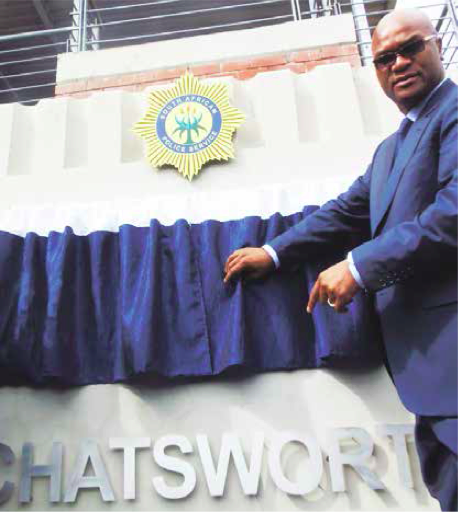 The Department of Public Works spent R105 million on improvements to the police station, which now also has a training facilities, camera fitted security and a control centre.
The Department of Public Works spent R105 million on improvements to the police station, which now also has a training facilities, camera fitted security and a control centre.
Speaking at the launch of the renovated police station, the then Police Minister Nathi Mthethwa, who has since become Minister of Arts and Culture, said the improvements would help police serve the 250 000 people who live in Chatsworth. “It is now a thoroughly modern police station, well equipped, well-staffed and with good facilities. It is a fine example of our government’s determination to do everything possible to make South Africa a safe and peaceful place.”
The Minister noted that parts of Chatsworth were rife with drug dealing and gangsterism, and special interventions were needed to address this.
“Chatsworth Police Station is at the centre of fighting this scourge and is to be saluted for its initiatives in increasing community awareness of the dangers of drugs working with the local drug action community,” he added.
“Chatsworth Police has a slogan for this fine work. That slogan is: ‘It starts with you and me’. I think that sums it up perfectly. While SAPS can and does arrest drug dealers and gangsters, the rest of us must do our bit.
“I urge the people of Chatsworth not to sit idly by when they see drug dealing and gang activity but to tell the police, so that together we can beat this evil.” With the new and improved resources, police Chats- worth can create a more efficient and professional work force, improve front line service delivery and equip officers to improve service delivery to the community. Chatsworth Police Station Commander Brigadier Soenraad Marias said the new police station had lifted staff morale.
“The detectives’ offices are bigger and they now have more privacy when doing their work.”
The upgrade of the police station started in 2008 and was completed in 2011. Just over 310 officers who work from the station.
“Common crimes reported at the police station include assault, arm robbery, property crime and drug related crimes,” Brigadier Marais said.
Jakes Singh, executive committee member of the Chatsworth Community Policing Forum, said the community was delighted to have a bigger police station.
“We have a very good relationship with the Chats- worth Police Station. We work very well in assisting police to fight crime in our area. The upgrade of this police station shows that the government is serious about fighting crime,” he said.
Minister Mthethwa said there were plans to build a new police in Welbedacht, which as an area situated west of Chatsworth.
“Negotiations are underway to identify a suitable building to use for this station,” he said.
Local government to get government attention
Local government to get government attention sadminFor the next five years, South Africans can expect improved services and a pleasant experience from local government.
President Jacob Zuma says national government will work closely with municipalities to deliver services to South Africans.
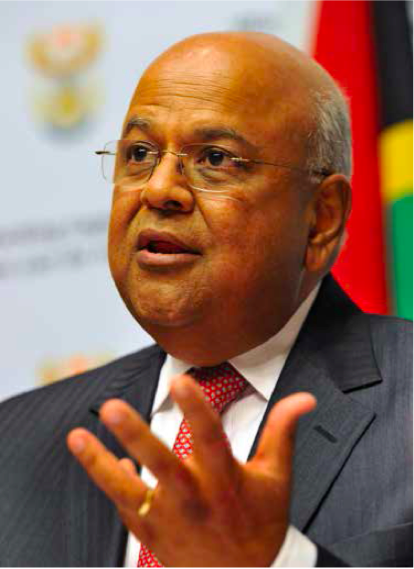 “We will work with municipalities to harness the potential and ensure that every municipality becomes a thriving service delivery centre for our people.
“We will work with municipalities to harness the potential and ensure that every municipality becomes a thriving service delivery centre for our people.
“The fundamental purpose of the support will be to ensure that all are able to provide simple services such as providing lights and water, cutting grass, en- sure functioning street and traffic lights, consistent refuse removal and credible billing for services,” added the President at the reply of the State of the Nation Address.
He also added that municipalities will get support in preparing budgets. “Tangible technical support will be provided which will include assisting municipalities to prepare cash-backed budgets.
“The municipalities will also be assisted with revenue collection strategies and to improve governance through the establishment of functional accountability and oversight structures and systems, such as the Municipal Public Accounts Committees and Audit Committees,” he added.
Two weeks ago, President Zuma announced that a plan of action will be implemented to revitalise local government. “We have evaluated all our municipalities. We have inspected their financial management, how they work within legislative processes as well as their ability to roll out projects and to address capacity constraints.” Various municipalities across the country will receive help from government targeting water and sanitation. Six district municipalities across the country and local municipalities will get assistance from government in the next 12 months.
Another intervention to help local government is the establishment of an Inter-Ministerial Task Team on Service Delivery.
The team is led by the Minister of Cooperative Governance and Traditional Affairs Pravin Gordhan and is made up of Ministers of Planning, Performance Monitoring and Evaluation in The Presidency, Human Settlements, Water and Sanitation, Transport, Home Affairs, Public Enterprises, Energy, Rural Development and Land Reform, Health and Basic Education.
President Zuma also indicated that the next five years of his administration will be how government respond to rapid urbanisation. “South Africa is becoming an urban country. By 2011 almost 63% of our population were residing in towns and cities and this trend is expected to continue over the coming decade,” explained the President. He added that government’s Integrated Urban Development Framework that will provide a new deal for South African cities and towns will be finalised by the end of this month.
The framework will set out a policy framework on how the urban system in South Africa can be reorganised so that cities and towns can become inclusive, resource efficient and good places to live in over the next 20 to 30 years.
The National Development Plan has also set a target to make sure South Africa is 80% urbanised by the year 2030. Government is working hard to overcome challenges of the past by putting policies in place for a better future ahead.
Food parcels a lifeline for the needy
Food parcels a lifeline for the needy sadminIf you or your family are going through a tough time and you're not able to meet the most basic needs, you can turn to the South African Social Security Agency (SASSA) for help.
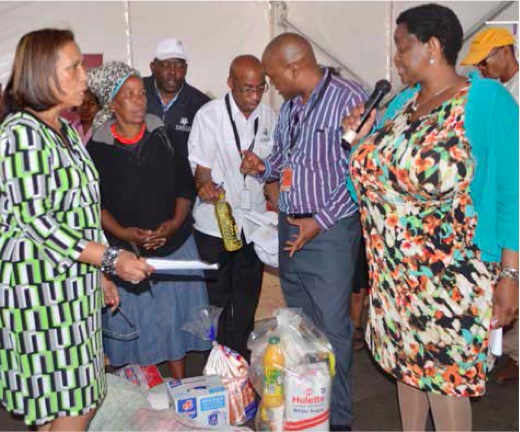 According to SASSA CEO Virginia Peterson, the agency hands out social relief of distress or food parcels to deserving people.
According to SASSA CEO Virginia Peterson, the agency hands out social relief of distress or food parcels to deserving people.
These are families or individuals who are experiencing undue hardships, she says.
“Undue hardships could refer to someone who has lot their job and no longer gets unemployment insurance or a family that has nothing. It could also be a result of someone’s house burning down, leaving them with nothing because they weren’t insured,” explains Peterson.
Other factors that could lead to undue hardship may include:
- You need help while you wait for your children’s grants to be processed.
- You do not qualify for a grant and you are in a desperate situation.
- You are unable to work for a period of less than six month because you are medically unfit.
- You are unable to get maintenance from the other parent of your child or children.
- The breadwinner of the family has died.
- The breadwinner has been sent to prison for a short time (less than six months).
- You have been affected by a disaster but the area or community in which you live has not been declared a disaster area.
What do you get?
Social relief of distress may be a food parcel or a voucher to buy food. Some provinces give this assistance in the form of cash. These are given for a short time only, usually for up to three months, which may be extended for another three months.
Requirements
Applications for social relief of distress can be made at the South African Social Security Agency (SASSA) offices.
You will need to take along a 13-digit bar-coded identity document and your children’s birth certificates.
If your identity document or a birth certificate is not available you will need:
- A sworn statement by a reputable person who knows the applicant and the child. This may be from a councillor, traditional leader, social worker or minister of religion.
- Proof that an application for a birth certificate or identity document has been lodged with the Department of Home Affairs.
- Where applicable, a temporary identity document issued by the Department of Home Affairs.
- A baptismal certificate.
- A road to health clinic card or a school report.
No application can be processed without the sworn statement/affidavit.
If you do not have an identity document and birth certificates an affidavit from your local police station, chief, councillor or religious leader may be proof enough.
You will also have to show proof that you:
- Applied for a grant.
- Had an emergency (e.g. provide a police report that your house burnt down).
- Tried to get maintenance.
- Have no other support.
- Are married, divorced or single.
- Have no income.
- Have a short-term medical disability.
After submitting the necessary documents, your application will be processed and assessed for credibility and genuine need for the service. Even if you do not have all the documents, you may get the first month’s food parcel, voucher or cash.
Remember to take all the documents to the office before the second month’s payment is due. If you do not, you may not get your second and third month’s food parcel, voucher or cash. If there is no change in your circumstances after you have received the grant for three months, you may apply to have the grant extended for another three months.
For more information, go to your nearest SASSA office or call 0800 60 10 11.
Soweto youth finds his feet in shoe business
Soweto youth finds his feet in shoe business sadminA love for sneakers is what led Soweto-born Sifiso Dlamini to start a shoe design and manufacturing company in 2005.
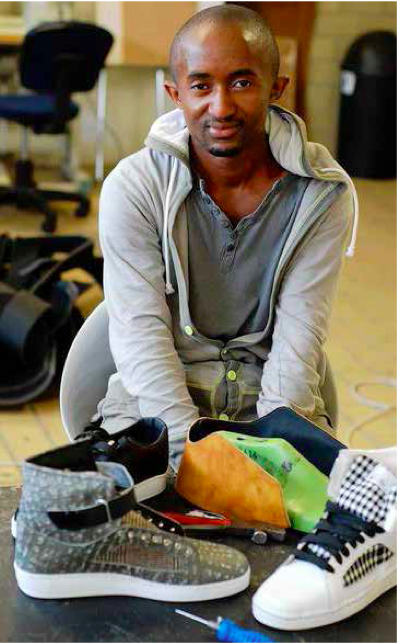 Almost 10 years later, Dlamini, 26, now runs a successful business.
Almost 10 years later, Dlamini, 26, now runs a successful business.
It all started when Dlamini could not fi shoes that were unique so he decided he would make his own.
“I have loved sneakers ever since I could remember. I used to save up all my money to buy different brands but I wanted something different,” he said.
With encouragement from his mother, Dlamini learnt to design his own.
“My mother suggested that I take a pair of old jeans and use them to redesign an old pair of sneakers. Even though my first design wasn’t that good, I wanted to learn more.”
By 2007, Dlamini had become better at it. “I take apart shoes down to the sole to see how they were made and what they were made of.”
Soon he was selling his own creations to family and friends.
However, material and start-up costs were high, so the young entrepreneur started a games room at his home in Meadowlands and sold samosas to earn more income.
Word about his unique sneakers soon spread and more people in his community wanted a pair. He eventually opened his show company.
“I named my company Eish Hade. It is a slang term we use in the township. If someone steps on your toes by mistake, we say ‘eish hade’, which means ‘oh sorry’.”
After two years of trial and error Dlamini, armed with dreams and his creations, approached companies for funding, to take his business to the next level. Chemcity, Sasol’s Enterprise Development Programme, decided to invest in the designer’s talent by sending him on a business course to learn how to market and grow his business.
But the Dlamini’s big break came in 2011 when Michelle Combrink of Zinto Activation Group, a brand building company, spotted Eish Hade’s sneakers at a local festival and decided to invest. With the R10 000 from the group, Dlamini was able to buy raw material and rent office space.
Dlamini and his team then received business support to further boost their shoe ideas to greater heights from the Eskom Development Foundation in 2012.
In the same year the company was named a runner up in the Eskom Business Investment Competition. The competition, run each year by the Eskom Development Foundation, recognises and rewards the passion and perseverance of small local businesses.
“From that moment orders poured in from across the country, some from Los Angeles in the US. It was a dream come true. To deliver on these orders we worked day and night and we were able to produce 50 pairs of unique, hand-crafted sneakers in just three weeks, it was tough but we did it,” said Dlamini.
The company received R25 000 in prize money and used the funds to purchase more machinery.
Dlamini urged young people not lose faith and passion in their dreams. “My advice to our youth is to never give up and to make sure they only surround themselves with positive people.”
Despite his success, Dlamini is still dreaming big. “One day I would like to have a big factory, create jobs for youth and ensure that Eish Hade shoes are everywhere,” he said.
For more information go to www.eishhade.co.za
Learners’ idea strikes gold
Learners’ idea strikes gold sadminA group of learners, who came up the with the idea to install sensors in the walking sticks of the visually impaired, has taken top honours in the Business Idea Generation Competition.
During an award ceremony held in Mbombela recently, officials from the Small Enterprise Development Agency (Seda) School Entrepreneurship Programme handed over the trophy and certificate to the learners from Tikhontele Secondary School in Matsulu.
“We came up with an idea of inventing a vibrating walking stick, which will help the visually impaired when walking alone at the shopping complex or at their work places,” said school’s team leader Tracy Ncabane, 17.
“The stick will vibrate if a car is coming their way and also when they are about to approach or hit a wall. It will help to reduce accidents and give vulnerable people the freedom to walk alone without supervision,” she explained.
Seda project manager Gavin Leverton said the competition involved more than 20 schools within the Mbombela local municipality.
“The programme is aimed at teaching schoolchildren how to become entrepreneurs. We are happy about the contribution that it made to the schools in helping the pupils come up with innovative, brilliant ideas.
Seda’s entrepreneurship promotions specialist, Lusanda Dyani, said the agency wanted to encourage pupils to consider entrepreneurship at school level because not everyone will go to university after matric.
“We want to empower them to start thinking of creating jobs and grabbing the business opportunities so that they can be entrepreneurs and become financially wise.
“The programme is a success at the moment and we are happy about the innovative ideas that they came up with... because it shows that we heading somewhere,” said Dyani.
Trainees take on manufacturing sector
Trainees take on manufacturing sector sadminYoung people from Mpumalanga have been equipped to make their mark in the manufacturing sector after successfully completing training in the manufacturing of stainless steel and furniture.
The then Economic Development, Environment and Tourism MEC Pinky Phosa handed certificates to the 120 graduates in Middelburg after they completed the training.
“We need to equip young people so that they can become entrepreneurs of note. We are happy that we are also addressing the shortage of scarce skills, while encouraging them to also form cooperatives within their communities,” said MEC Phosa.
She said training young people should be matched with opportunities of employment and entrepreneurial avenues.
“I will engage with other departments so that we can come up with a way to support the small, medium and micro enterprises and youth cooperatives to ensure that they create jobs that are sustainable.
“We cannot invest in the training and fail to support them with market. The government must be a key supporter,” she said. MEC Phosa said the partnership between her department and the Furniture Technology Centre, Mpumalanga Stain- less Initiative, Mpumalanga Stainless Steel Cluster and the Mpumalanga Tooling Initiative had yielded impressive results. Eighty per cent of the young people who completed their training have become entrepreneurs, while some are employed in the manufacturing sector. The MEC said the department had prioritised job creation and training as part of its contribution towards youth empowerment. Mpumalanga Tooling Initiative coordinator Rehana Pillodia said they were pleased with the post training results for their graduates.
“We are happy about the support from the department and our trainees are being absorbed by various companies while some create jobs for themselves, she said. Pillodia said the trainees also received a monthly stipend of R700 over a period of one year.
One of the graduates, S’thembiso Sbayana, 22, said the training had provided her with opportunities to succeed.
“I wanted to become a technician but did not have money to pursue my dreams. When I heard of the opportunity, I smiled with joy knowing that I will be able to have a career in tooling. I enjoyed my training in a male dominated career. I can’t wait to hit the work environment,” she said.
Another graduate, Ahmed Mungalee, 29, burst into tears of joy when he explained how his life had changed since completing the training.
“From a young age, I’ve always regarded myself as a businessman but I did not have the opportunity to pursue my dream. After completing the training in 2012, I went all out to start a furniture business with nothing but just wood,” said Mungalee.
“I am very happy that I grabbed the opportunity with both hands. If I did it every young person can do it,” he added.
Skilling inmates for success
Skilling inmates for success sadminAbout 10 000 inmates have been trained as artisans as part of government’s efforts to develop skills to support the country’s economy.
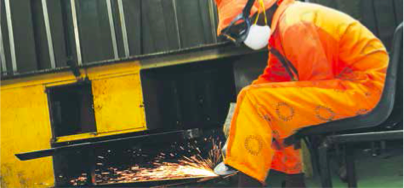 According to the Department of Correctional Services (DCS), 9 403 inmates received training in welding, electrical, plumbing, building, carpentry, painting, tiling and chef assistance in the 2013/14 financial year.
According to the Department of Correctional Services (DCS), 9 403 inmates received training in welding, electrical, plumbing, building, carpentry, painting, tiling and chef assistance in the 2013/14 financial year.
In addition to the department’s budget, from April 2012 to March 2014 about R50 million was spent from the National Skills Fund to train offenders in welding, plumbing, bricklaying, plastering, electrical, carpentry and agricultural skills programmes.
The then Correctional Services Minister Sibusiso Ndebele said the department would produce more artisans to deal with the shortage of critical skills in South Africa. “This will also contribute towards government’s Decade of the Artisan programme, with the goal of producing 30 000 artisans annually,” he added.
During 2012/13 a total of 1 515 inmates per day worked at DCS Production Work- shops where qualified artisans transferred skills to offenders in 10 wood and steel workshops, 19 textile workshops, one shoe factory, six bakeries and three sanitary towel manufacturing workshops.
In addition, 3 110 offenders were involved in agricultural activities each day. Offenders developed work skills and experience in agricultural projects such as vegetable production, fruits, broiler, egg, dairy, piggery, small stock (goat and sheep farming), beef and agronomy farming.
Minister Ndebele said developing the skills of those incarcerated will return to society after serving their sentence. Thus, a focus on rehabilitation and re-orientation of offenders is critical. DCS is re-moulding the character and improving the skills of offenders so that they return to society with enhanced prospects of success,” said explained the Minister.
This was particularly important because young people make up a significant portion of those behind bars.
“As at March 2013, nearly a quarter (24.99 per cent) of the sentenced offender population was youth. A number of inmates who, while not under 25, are still in the prime of their life. Children, as young as 17 years of age, have committed serious crimes,” he said.
The average inmate was a young substance abuser who had dropped out of school before high school, was functionally illiterate and more often than not, homeless, the Minister added.
By teaching these inmates skills, the DCS is hoping to change their lives, while at the same time boosting the economy.
Domestic workers must register for UIF
Domestic workers must register for UIF sadminDomestic workers should register for the Unemployment Insurance Fund (UIF) to ensure they have a cushion if they find themselves out of work.
This is the advice of Labour Minister Mildred Oliphant who was speaking at a Domestic Sector Imbizo, organised by the Department of Labour, recently.
The Minister said that the number of domestic workers currently registered with the UIF was not a true reflection of the total number of domestic workers in the country. There are currently 652 676 domestic workers on the UIF register.
Institutions like the UIF have played a critical role in protecting workers against poverty by providing unemployment insurance and other benefits to workers, she stressed.
“We know that some employers of domestic workers do not register their employees with UIF. The department has set in motion the legislative framework for [domestic workers] to be registered.
“However, in order for us to enjoy the benefits of a better life for all, you as domestic workers need to assist government to ensure that you are registered with UIF,” said Minister Oliphant.
The Compensation for Occupational Injuries and Diseases Act is being reviewed by legal experts with a possibility of extending this to the domestic sector. Public hearings would be held soon on the planned review.
The domestic sector’s current sectoral determination came into effect from 1 December 2013 and will end on 30 November 2014.
The minimum wages apply for domestic workers who work more than 27 hours per week. For those who work in mainly urban areas the minimum wage is R9.63 hourly, R433.35 weekly (for a 45 hour week) and R 1877.70 monthly (for a 45 hour week), while for those working in mainly rural areas it is R8.30 hourly, R373.50 weekly (for a 45 hour week) and R1618.37 monthly (for a 45 hour week).
Sectoral determination regulates employment conditions in the vulnerable sectors of the economy.
For more information on the UIF and how to apply call 0800 843 843.
Bursaries: Department of Water Affairs Bursary Programme (2015)
Bursaries: Department of Water Affairs Bursary Programme (2015) sadminIf you are interested in studying Engineering, Environmental Science, Microbiology or any related field offered below but do not have the necessary funds, then this opportunity is for you. The Department of Water Affairs is offering bursary opportunities for full-time studies in 2015.
Bursaries will be allocated on the basis of a balanced consideration of the following factors: Academic performance; Race and gender; Financial need; Need of DWA in reference of the specific qualification; An interview schedule.
Assistance will be provided on a year-to-year basis and bursaries will be renewed only if performance of bursars is satisfactory. Successful applicants to the bursary scheme will receive full tertiary registration and tuition costs, residence and meal fees; book allowance; and an annual personal allowance.
Obligations
DWA will require bursars who obtain their qualifications to join the Water Learning Academy on a fixed term contract with DWA for a period of maximum of five (5) years but not less than three (3) years. Should bursars choose not to meet this obligation the bursars will be required to reimburse DWA for all monies spent on the tertiary studies, inclusive of calculated interests.
Students pursuing the following fields of study are eligible to apply for this bursary:
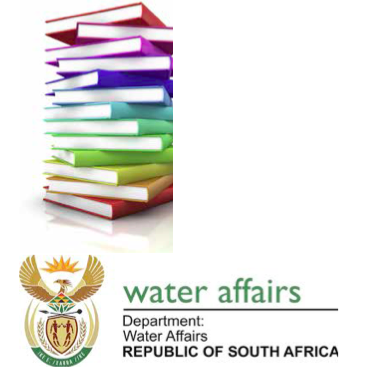 Analytical Chemistry
Analytical Chemistry- Aquatic Sciences
- Biochemistry
- Biological Sciences
- Cartography
- Engineering
- Civil Engineering
- Electrical Engineering (Heavy Current)
- Mechanical Engineering
- Environmental Law
- Environmental Management
- Environmental Science
- Geochemistry
- Geographical information Systems
- Geo-hydrology
- Geology
- Hydrology
- Limnology
- Microbiology
- Surveying
- Water & Sanitation
- Water Care
- Water Resource Management
- Water Utilisation
How to apply
Simply fill out the bursary application form found on the department’s website www.dwaf.gov.za and submit to the Department of Water Affairs, Director: Learning Academy, Private Bag x313, Pretoria,0001 or Email: bursaries@dwa.gov.za.
Please Note: Applications close on 31 August 2014
20 Years of Freedom: A timeline
20 Years of Freedom: A timeline sadminFrom the first democratic election to the first ever FIFA World Cup to be played on African soil, South Africa has become the centre of attention since democracy in 1994. As the country celebrates 20 Years of Freedom, Vuk’uzenzele looks at some of the historic moments in the country’s history over the past two decades.
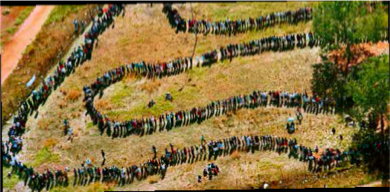 1994: South Africa’s first democratic elections
1994: South Africa’s first democratic elections
27 April was a defining moment in the country’s calendar, marking the nation’s first democratic elections. For the first time South Africans of all races were able to cast their vote and have a say in who would govern the country. Following the ANC’s victory in the elections, Nelson Mandela became the first democratically elected President of South Africa.
1994: National flag adopted
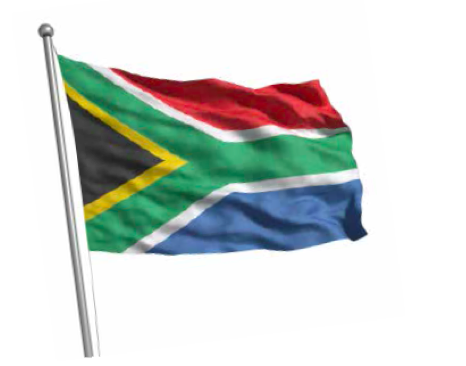 One of the symbolic moments in 1994 was no doubt the adoption of the National Flag.
One of the symbolic moments in 1994 was no doubt the adoption of the National Flag.
The horizontal “Y” shaped flag with its red, white, green, yellow, black and blue colours became a symbol of national unity. The occasion marked a new beginning for a nation bruised by years of segregation and inequality. The new flag replaced the one that had been used since 1928.
Over the past two decades, the South African flag has become a regular feature during major events hosted in the country and it can be seen flying at every public building.
1995: The Rugby World Cup

Who can forget the throngs of people at Ellis Park Stadium, who chanted ‘Nelson, Nelson, Nelson’ as former President Mandela entered the stadium to congratulate the Springboks on their victory over New Zealand during the 1995 World Cup final?
It was a unifying moment for South Africa. Black people had a historic dislike for the Springboks, a team they associated with apartheid. But Mandela chose to wear a Springbok jersey and cap on that day to foster unity and reconciliation among South Africans of all race groups. It was a classic moment that will remain in the minds of many South Africans for years to come.
Mandela and Springbok captain Francois Pienaar’s involvement in the World Cup is the subject of the 2009 film Invictus.
1996: The Truth and Reconciliation Commission
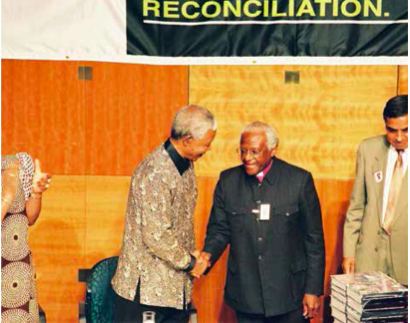 It was the Truth and Reconciliation Commission (TRC) of 1996 that made many of us realise that the truth really hurts. But as hurtful as it was, it was probably the process of the TRC that truly made South Africa’s transition from apartheid to democracy a unique experience, one that remains the model of the continent of Africa to this day.
It was the Truth and Reconciliation Commission (TRC) of 1996 that made many of us realise that the truth really hurts. But as hurtful as it was, it was probably the process of the TRC that truly made South Africa’s transition from apartheid to democracy a unique experience, one that remains the model of the continent of Africa to this day.
The TRC was based on the final clause of the Interim Constitution of 1993 and passed in Parliament as the Promotion of National Unity and Reconciliation Act, No 34 of 1995. It was set up by the Government of National Unity to help deal with what happened under apartheid. Even though the injustices of the past could not be undone; even though families had lost loved ones, it was felt that the only way to heal as a country was to confront the past, ugly as it was. The TRC provided healing for a nation wounded by years of conflict and exploitation.
1996: Sporting victories
That same year, South Africa shone on the sports front with Bafana Bafana winning the African Cup of Nations tournament, which the country hosted.
Penny Heyns also won both the 100m and 200m breaststroke events at the Atlanta Olympic Games. It was the first time democratic South Africa participated in the Olympics and Heyns’ performance in the pool made her the country’s first post-apartheid Olympic gold medallist. On the track, Josia Thugwane also did the country proud by winning a gold medal at his first attempt. Thugwane won the gold medal in the marathon becoming the first black athlete to earn an Olympic gold for South Africa.
Free Wi-Fi to keep city residents connected
Free Wi-Fi to keep city residents connected sadminCities across the country are bridging the digital divide for its residents by making Wi-Fi freely available to them.
 Tshwane, Johannesburg and Cape Town are just some of the cities ensuring those living there can access Wi-Fi at no cost.
Tshwane, Johannesburg and Cape Town are just some of the cities ensuring those living there can access Wi-Fi at no cost.
Wi-Fi is technology that allows an electronic device to connect to the internet wirelessly using radio waves.
The City of Tshwane is introducing free Wi-Fi in parts of Pretoria as part of plans to build good Information Communication Technology (ICT) infrastructure that stimulates economic growth, improves the delivery of basic services and bridges the digital divide. This is being done a result of a partnership between the City of Tshwane and Project Isizwe, a non-profit global movement aimed at bringing free internet to Africa.
The roll-out will be done in two phases. According to the City of Tshwane, five locations already have free Wi-Fi, the cost of which is being carried by the City. These are the Tshwane University of Technology Soshanguve Campus, University of Pretoria (Hatfield Campus), Tshwane North College, Mamelodi Community Centre and Church Square in the Pretoria CBD.
Phase 2 is expected to start later this year and will give 213 schools in Soshanguve, Mamelodi and Atteridgeville access to Wi-Fi.
The City of Johannesburg plans to roll out free Wi-Fi throughout the city by 2016.
So far, the City has spent over R1 billion on broadband network and is now working on access points for residents.
Nine Rea Vaya stations already have free Wi- Fi. Passengers at bus stations at the Orlando Stadium, Orlando Police Station, Soccer City, Noordgesig, Joburg Theatre, Park Station, Art Gallery, Carlton Centre and Fashion Square are able to access the free Wi-Fi.
The City is also expected to train 1 000 students a year in ICT operations, who will work in communities to help introduce the latest technology to residents.
By the end of this year, 35 libraries will be connected and all 85 libraries in the city will have free internet access.
In the Western Cape, a R2.8 million digital access centre is set to be launched in Elsies River by the Western Cape Government in partnership with the City of Cape Town.
The Interactive Community Access Net- work (ICAN) Centre forms part of the roll out of the Western Cape Government’s R1.3 billion broadband plan to connect com- munities across the province over the next three years.
Residents will have access to Wi-Fi hot- spots, meeting rooms, video conference facilities, training workshops, study rooms and soundproof recording booths, the Western Cape Provincial Government said.
The initiative builds on the success of the City of Cape Town’s broadband initiative, in which R222 million has been set aside over three years towards the roll out of broadband infrastructure throughout the Metro.
Waging war on water leaks
Waging war on water leaks sadminThe Ekurhuleni Municipality is pulling the plug on water leaks through its War on Leaks project.
About 43 000 buildings in the municipality are getting free leak tests and water leaks are being repaired as part of the project.
Homes in Tsakane, Langaville and Geluksdal, which have high volumes of water wastage, are benefiting from the project, which is expected to end in January 2016.
Member of the Mayoral Committee for Water and Energy Councillor Aubrey Nxumalo said underground pipes and yard connections would be refurbished, sink taps, baths, showers, outdoor taps, and underground pipes fi and water metres installed.
About 27 schools within these areas will also have leaks on the premises repaired.
War on Leaks is an Expanded Public Works Programme (EPWP) project, which provides work opportunities for the locals.
The first phase of the War on Leaks project, which started in November 2013 in Ekurhuleni, has already created 184 jobs.
The second phase, beginning in August this year, will recruit 193 unemployed local community members.
The Department of Water and Environmental Affairs set aside a R10 million grant for the War on Leaks project.
At the launch of the project, the then Deputy Minister of Water and Environmental Affairs Rejoice Mabudafhasi, who is now the Deputy Minister of Arts and Culture, appealed to all South Africans not to waste water.
“I would like to encourage all South Africans to focus on the need to restore and preserve the integrity of this most precious resource, water. “South Africans must take responsibility to make sure this scarce resource is managed in an effective and sustainable manner.”
She added that South Africa was ranked among the 30 water scarce countries in the world with annual rainfall levels about half of the world’s average.
“We are losing 37 per cent of water annually through leaks which translates to R7 billion per year,” she stressed.
The Deputy Minister said the aim of the project was to fix the leaks in households, hospitals, clinics, and schools and create awareness about saving water.
Ekurhuleni is not the fi municipality to implement the War on Leaks Programme as it was piloted in Mogale City, also in Gauteng, in 2010.
“It was very successful as the water loss was reduced drastically and they are still implementing it,” she added.
KZN youth fashioning success
KZN youth fashioning success sadminYoung fashion designers in KwaZulu-Natal have been given the once-in-a- lifetime opportunity to be mentored by the award- winning designer David Tlale.
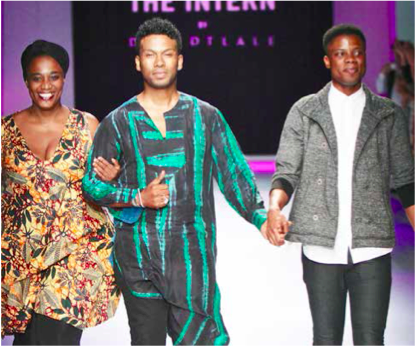 The initiative is thanks to a partnership between the KZN Department of Economic Development and Tourism and Tlale, which is aimed at nurturing up-and-coming designers.
The initiative is thanks to a partnership between the KZN Department of Economic Development and Tourism and Tlale, which is aimed at nurturing up-and-coming designers.
Ayanda Mthembu, whose journey with fashion began as a teen when he sketched outfits for paper dolls and led to a fashion and textiles course at the Durban University of Technology, is one of the interns to be taken under Tlale’s wing.
“Fashion is my calling, my soul, my passion and my gift and I was created to design, so I had to apply for the internship,” said Mthembu.
He was accepted into the programme and has been mentored by Tlale, who in 2009 was named Designer of the Year after showcasing his debut Spring/Summer 2010 Ready-to-Wear Collection at Africa Fashion Week.
Mthembu said the year long internship was a dream come true.
“It is an amazing experience, especially since I don’t have any experience in the industry as yet, so this is a great opportunity to start off my career with the most amazing and talented designer in Africa.”
Putting together his very first collection during the Mercedes Fashion Week was exciting yet scary, says Mthembu.
“It was truly an emotional experience, seeing all my hard work coming to life on the runway is the most fulfilling feeling ever. It was undoubtedly the best experience of my life.”
The KZN Department of Economic De- velopment and Tourism has made progress in growing the fashion and textile industry in the province.
“The province of KwaZulu-Natal has always looked favourably on nurturing young fashion designers in the province. It is for this reason that we decided to partner with David Tlale in order to cultivate new talent, creating a platform for these young KwaZulu-Natal designers where they will be able to learn how to run a business in the fashion industry and create job opportunities,” said MEC for Economic Development and Tourism Michael Mabuyakhulu.
Mthembu is one of four interns who have the opportunity to learn from Tlale.
The designers face the demands and realities of the fashion world and the business of fashion, according to Tlale.
“There’s a profound difference between the theoretical work and a hands-on experience. I feel that this gives young designers an enriching practice. This way they get to see us work as we build a collection from scratch,” he added.
Designers get to work behind the scenes at fashion week and catch a glimpse of the fashion week mania, as well as witnessing the day-to-day running of a fashion business.
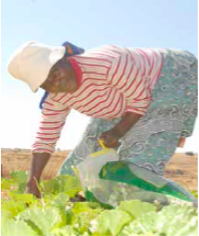
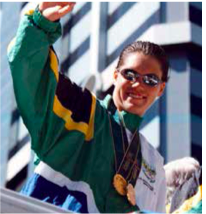
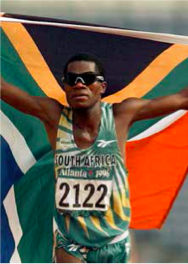

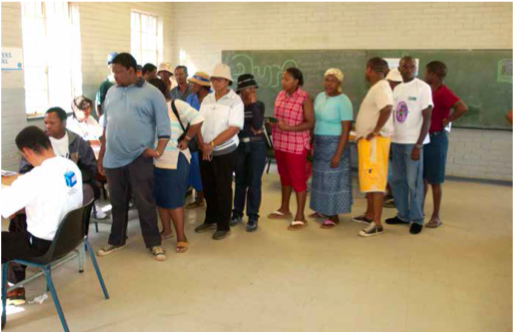 President Mandela announced 2 June as the date for South Africa’s second democratic election, a vote that marked his retirement from office. Thabo Mbeki became South Africa’s second democratically elected President. The Democratic Party became the largest opposition party, after being the 5th largest party in the 1994 elections and the number of parties represented in the National Assembly increased to 13.
President Mandela announced 2 June as the date for South Africa’s second democratic election, a vote that marked his retirement from office. Thabo Mbeki became South Africa’s second democratically elected President. The Democratic Party became the largest opposition party, after being the 5th largest party in the 1994 elections and the number of parties represented in the National Assembly increased to 13.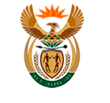 On 27 April a new Coat of Arms was introduced. The motto, !ke e: /xarra //keis, is written in the Khoisan language of the /Xam people and translates literally to “diverse people unite”. The new Coat of Arms replaced the one that served South Africa since 17 September 1910. The change reflected government’s aim to highlight the democratic change in South Africa and a new sense of patriotism.
On 27 April a new Coat of Arms was introduced. The motto, !ke e: /xarra //keis, is written in the Khoisan language of the /Xam people and translates literally to “diverse people unite”. The new Coat of Arms replaced the one that served South Africa since 17 September 1910. The change reflected government’s aim to highlight the democratic change in South Africa and a new sense of patriotism.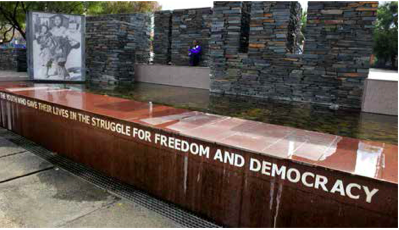 The Hector Pieterson Museum is named after one of the first casualties of the march through Soweto on 16 June 1976, when police shot at demonstrating students. Pieterson was only 13 years old when he was shot dead by police.
The Hector Pieterson Museum is named after one of the first casualties of the march through Soweto on 16 June 1976, when police shot at demonstrating students. Pieterson was only 13 years old when he was shot dead by police. The 2003 International Cricket Council (ICC) Cricket World Cup was co-hosted by South Africa, Zimbabwe and Kenya. This edition of the World Cup was the first to be played on African soil. In the final, Australia made 359 runs for the loss of two wickets - the largest ever total in a final – defeating India by 125 runs.
The 2003 International Cricket Council (ICC) Cricket World Cup was co-hosted by South Africa, Zimbabwe and Kenya. This edition of the World Cup was the first to be played on African soil. In the final, Australia made 359 runs for the loss of two wickets - the largest ever total in a final – defeating India by 125 runs.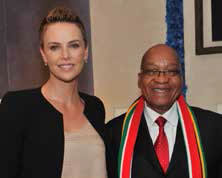 2004: Charlize Theron wins an Oscar
2004: Charlize Theron wins an Oscar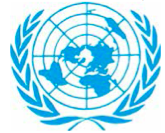 The Springboks won the Rugby World Cup for the second time, beating England (15-6) in final at the Stade France in Paris.
The Springboks won the Rugby World Cup for the second time, beating England (15-6) in final at the Stade France in Paris.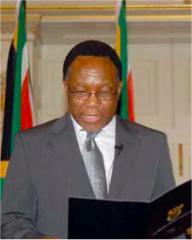 South Africa was selected for the fi time as a non-permanent member of the United Nations Security Council for the period 2007/08.
South Africa was selected for the fi time as a non-permanent member of the United Nations Security Council for the period 2007/08.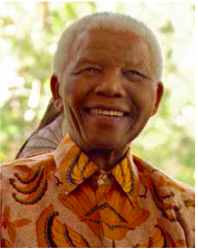 Nelson Mandela’s 91st birthday also marked the inaugural Mandela Day. After the success of this first Mandela Day, the United Nations adopted it as a day for global humanitarian action, calling it Nelson Mandela International Day.
Nelson Mandela’s 91st birthday also marked the inaugural Mandela Day. After the success of this first Mandela Day, the United Nations adopted it as a day for global humanitarian action, calling it Nelson Mandela International Day.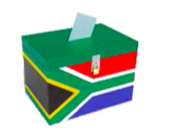 South Africans voted for the 4th time in 2009 general elections and Jacob Zuma was elected President.
South Africans voted for the 4th time in 2009 general elections and Jacob Zuma was elected President.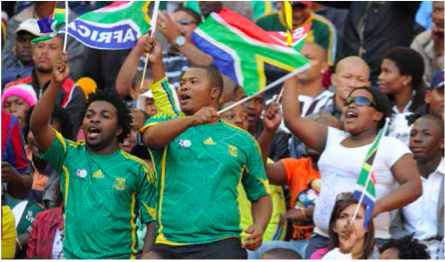 On June 11, the FIFA World Cup kicked off at the packed Soccer City stadium in Johannesburg, with hosts South Africa taking on Mexico. South Africa got its continent’s first World Cup off to a thrilling start by scoring the tournament’s opening goal in a spirited 1-1 draw with Mexico. Approximately 85 000 spectators attended the match, while millions more watched on public viewing screens all over the country.
On June 11, the FIFA World Cup kicked off at the packed Soccer City stadium in Johannesburg, with hosts South Africa taking on Mexico. South Africa got its continent’s first World Cup off to a thrilling start by scoring the tournament’s opening goal in a spirited 1-1 draw with Mexico. Approximately 85 000 spectators attended the match, while millions more watched on public viewing screens all over the country.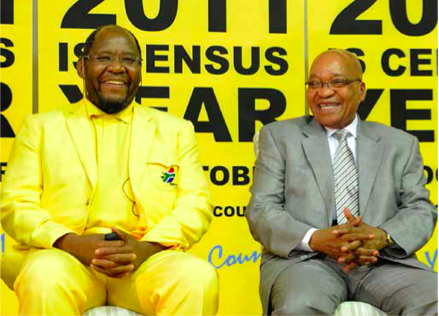 South Africa conducted its third census. In October 2012, Statistics South Africa (Stats SA) released the results of its 2011 census, the third official census since the advent of democracy. It revealed that between the first and the third post-apartheid census, the population grew by just over 11 million to 51.7 million and 79.6 per cent of the population is black.
South Africa conducted its third census. In October 2012, Statistics South Africa (Stats SA) released the results of its 2011 census, the third official census since the advent of democracy. It revealed that between the first and the third post-apartheid census, the population grew by just over 11 million to 51.7 million and 79.6 per cent of the population is black.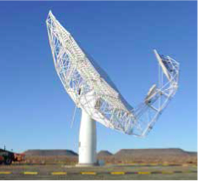 On 25 May, members of the Square Kilometre Array (SKA) Organisation announced that the SKA telescope would be split between Africa and Australia, with a majority share of the telescope destined to be built in South Africa. All the dishes and the mid frequency aperture arrays for Phase II of the SKA will be built in Southern Africa.
On 25 May, members of the Square Kilometre Array (SKA) Organisation announced that the SKA telescope would be split between Africa and Australia, with a majority share of the telescope destined to be built in South Africa. All the dishes and the mid frequency aperture arrays for Phase II of the SKA will be built in Southern Africa.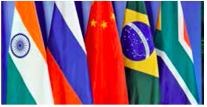 That same year, South Africa was formally invited to become the fifth member of BRIC, the acronym for the association of four major emerging national economies including Brazil, Russia, India and China. With the addition of South Africa, the bloc expanded its name to BRICS.
That same year, South Africa was formally invited to become the fifth member of BRIC, the acronym for the association of four major emerging national economies including Brazil, Russia, India and China. With the addition of South Africa, the bloc expanded its name to BRICS.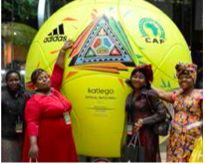 South Africa hosted the 2013 Africa Cup of Nations, also known as the Orange Africa Cup of Nations, for the second time after the original host Libya was stripped of its hosting rights due to the Libyan civil war. It was the 29th Africa Cup of Nations the football championship of Africa organised by the Confederation of African Football (CAF)
South Africa hosted the 2013 Africa Cup of Nations, also known as the Orange Africa Cup of Nations, for the second time after the original host Libya was stripped of its hosting rights due to the Libyan civil war. It was the 29th Africa Cup of Nations the football championship of Africa organised by the Confederation of African Football (CAF)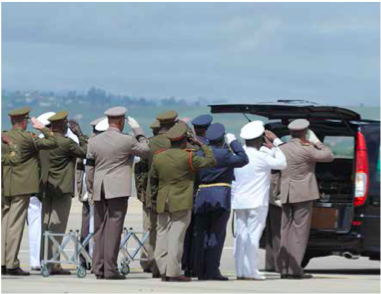 A sad day in the history of South Africa and the world, 5 December, as South Africa’s first democratically elected President Nelson Mandela passed away. He was buried in Qunu in the Eastern Cape on 15 December 2013.
A sad day in the history of South Africa and the world, 5 December, as South Africa’s first democratically elected President Nelson Mandela passed away. He was buried in Qunu in the Eastern Cape on 15 December 2013.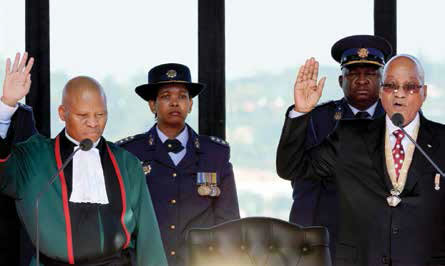 South Africa held its 5th democratic election on 7 May, as the country marked 20 years of Freedom. The election, which saw the ANC emerge victorious, was declared free and fair. Jacob Zuma was elected President for the second time and was inaugurated on in front of thousands of well wishers at the Unions Buildings on 24 May.
South Africa held its 5th democratic election on 7 May, as the country marked 20 years of Freedom. The election, which saw the ANC emerge victorious, was declared free and fair. Jacob Zuma was elected President for the second time and was inaugurated on in front of thousands of well wishers at the Unions Buildings on 24 May.